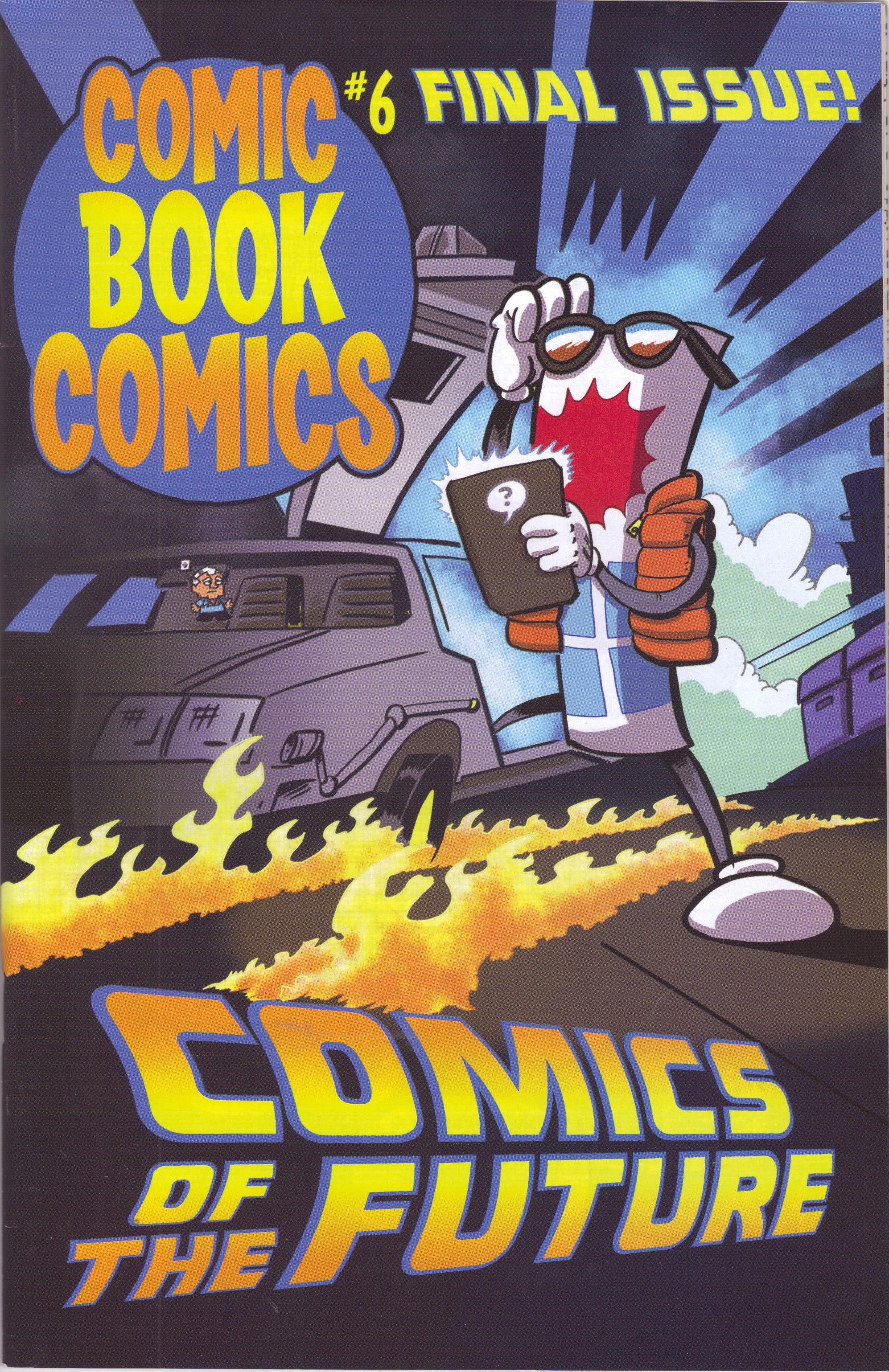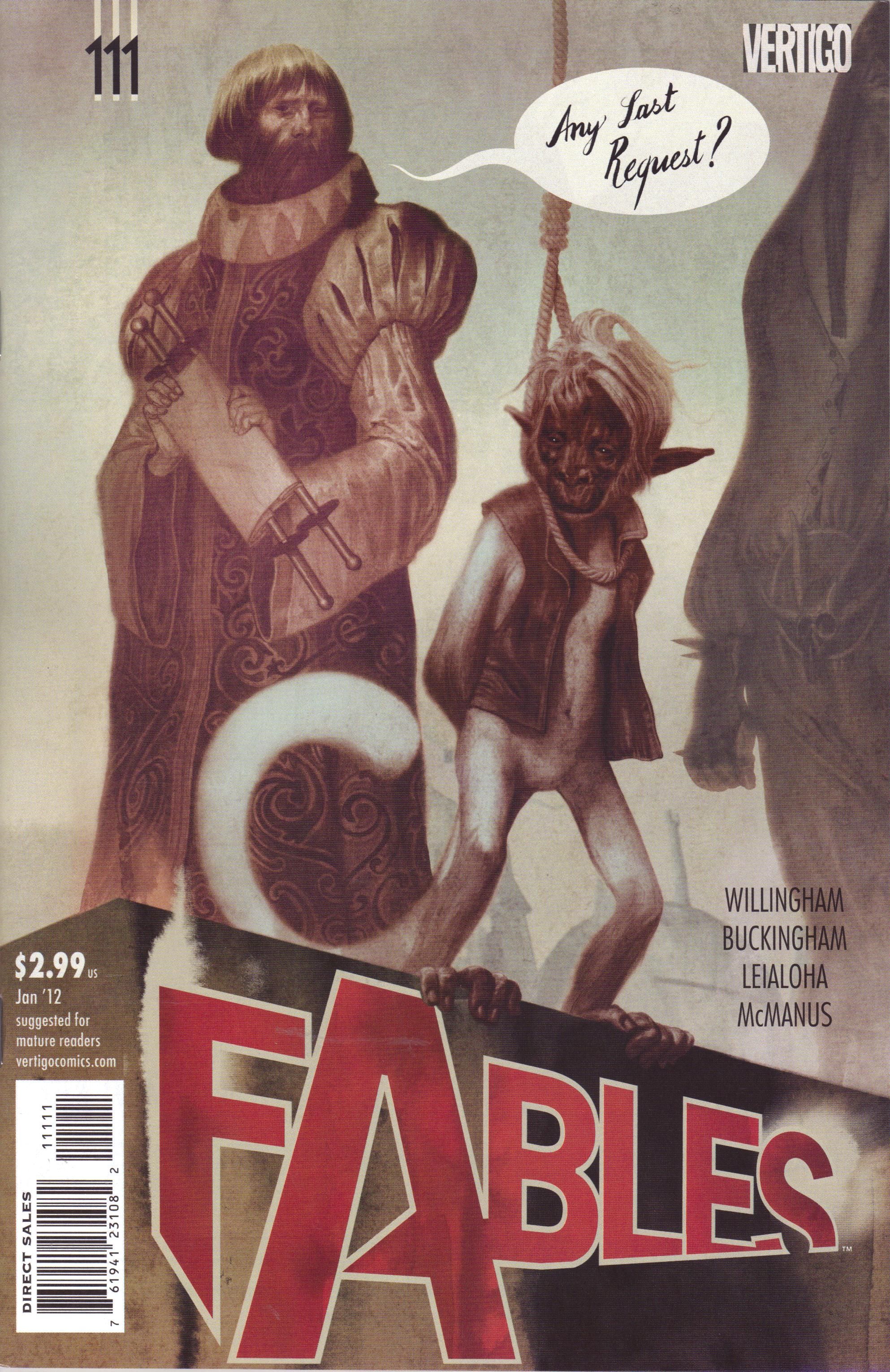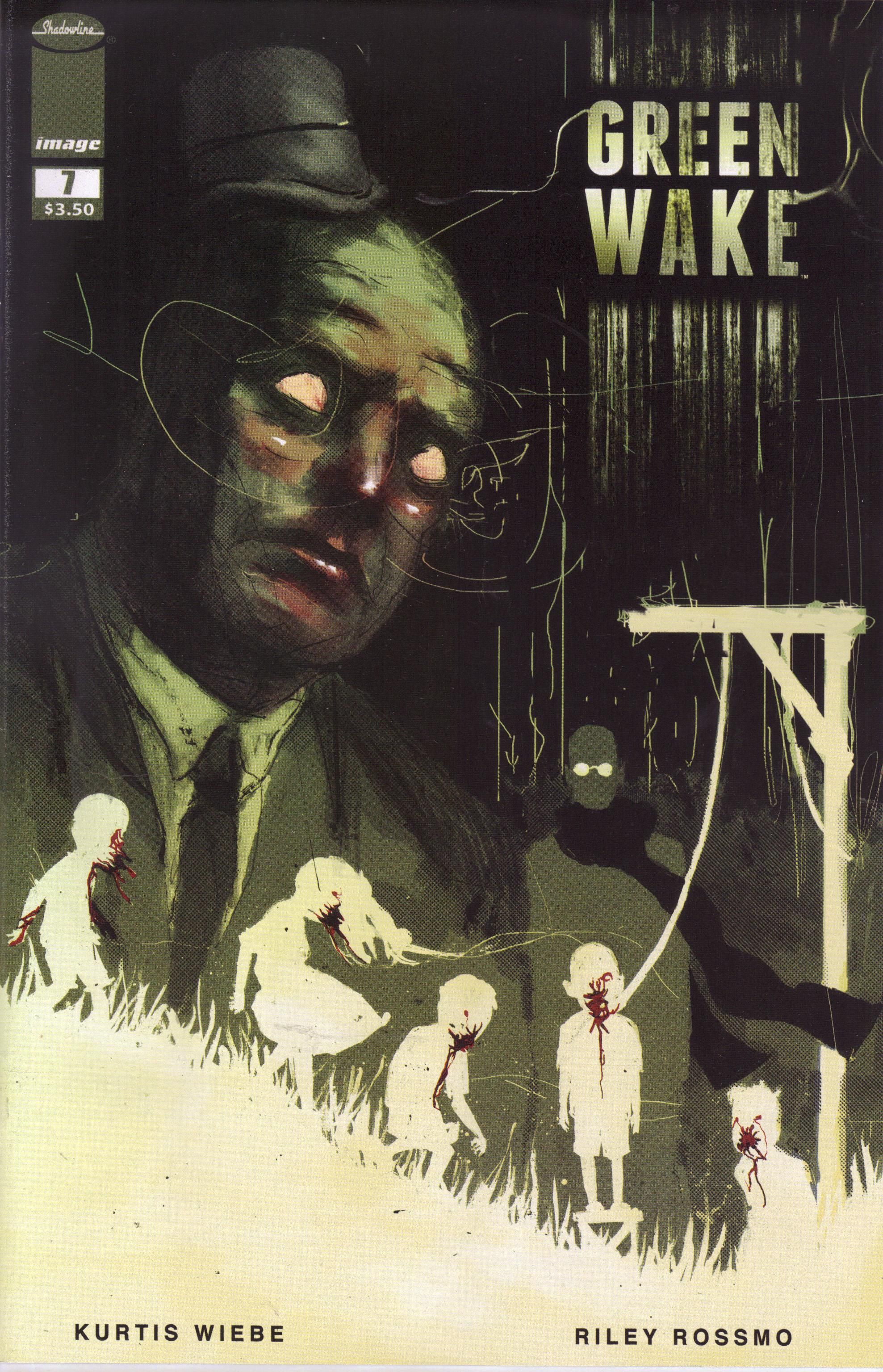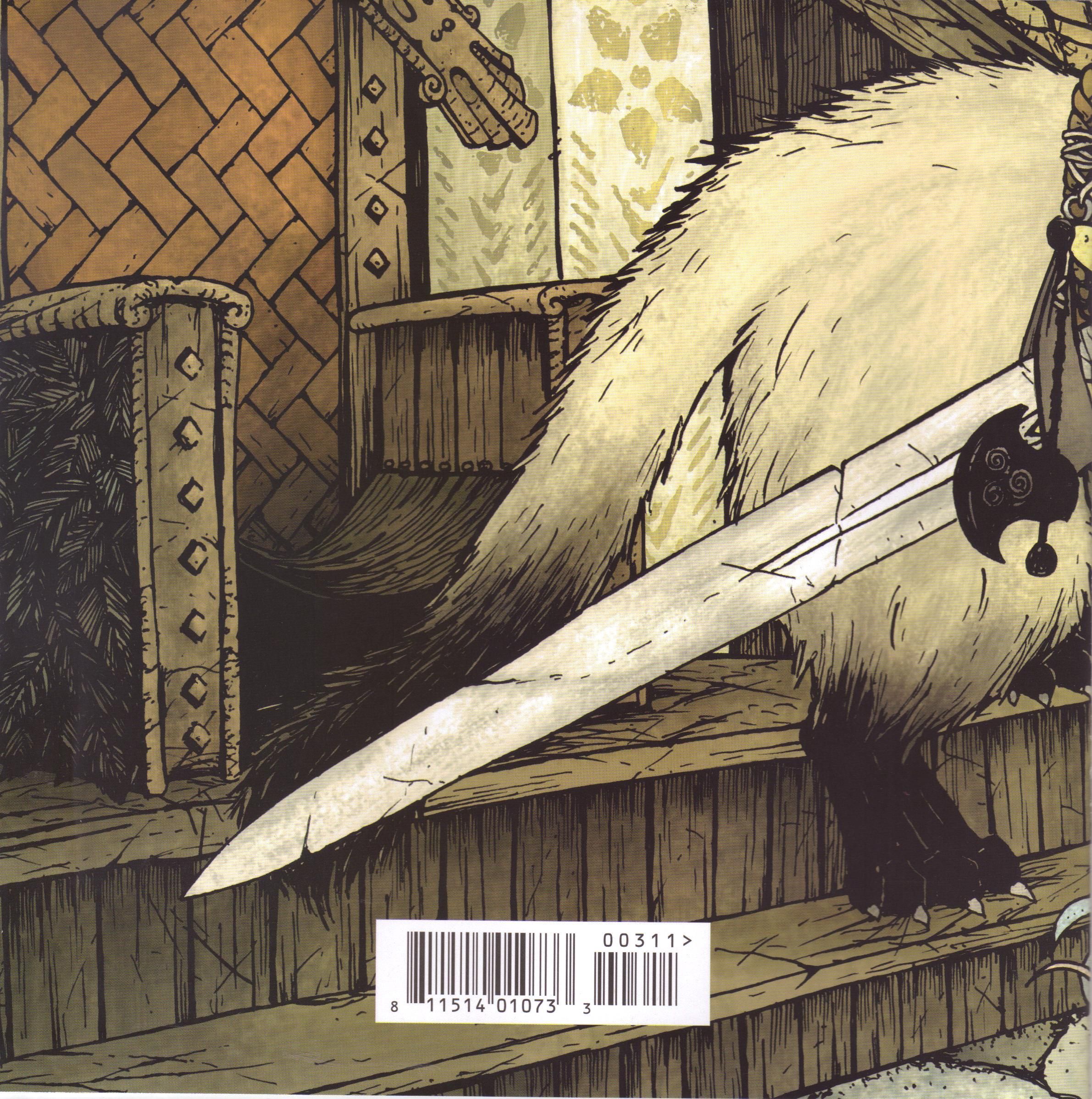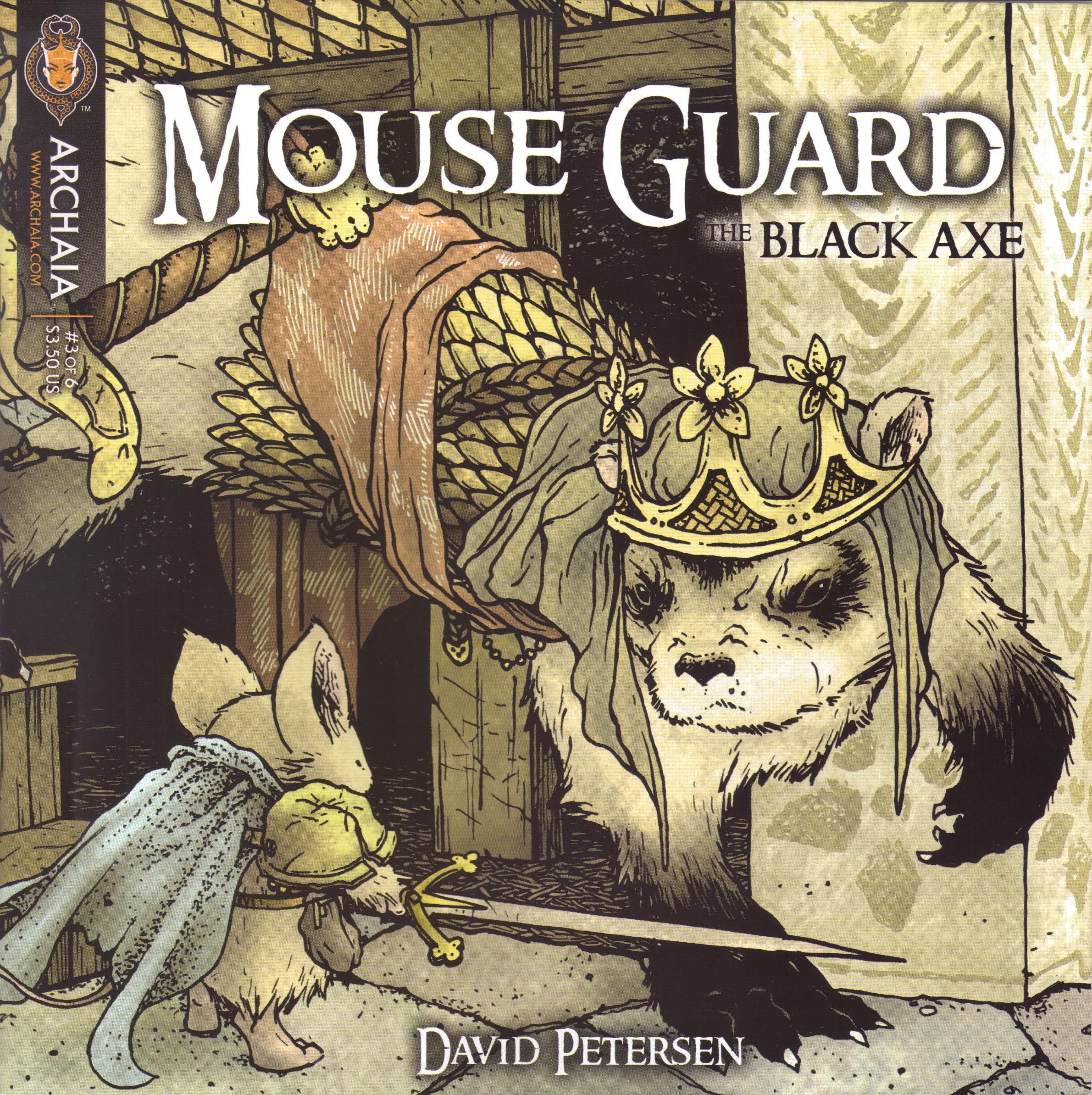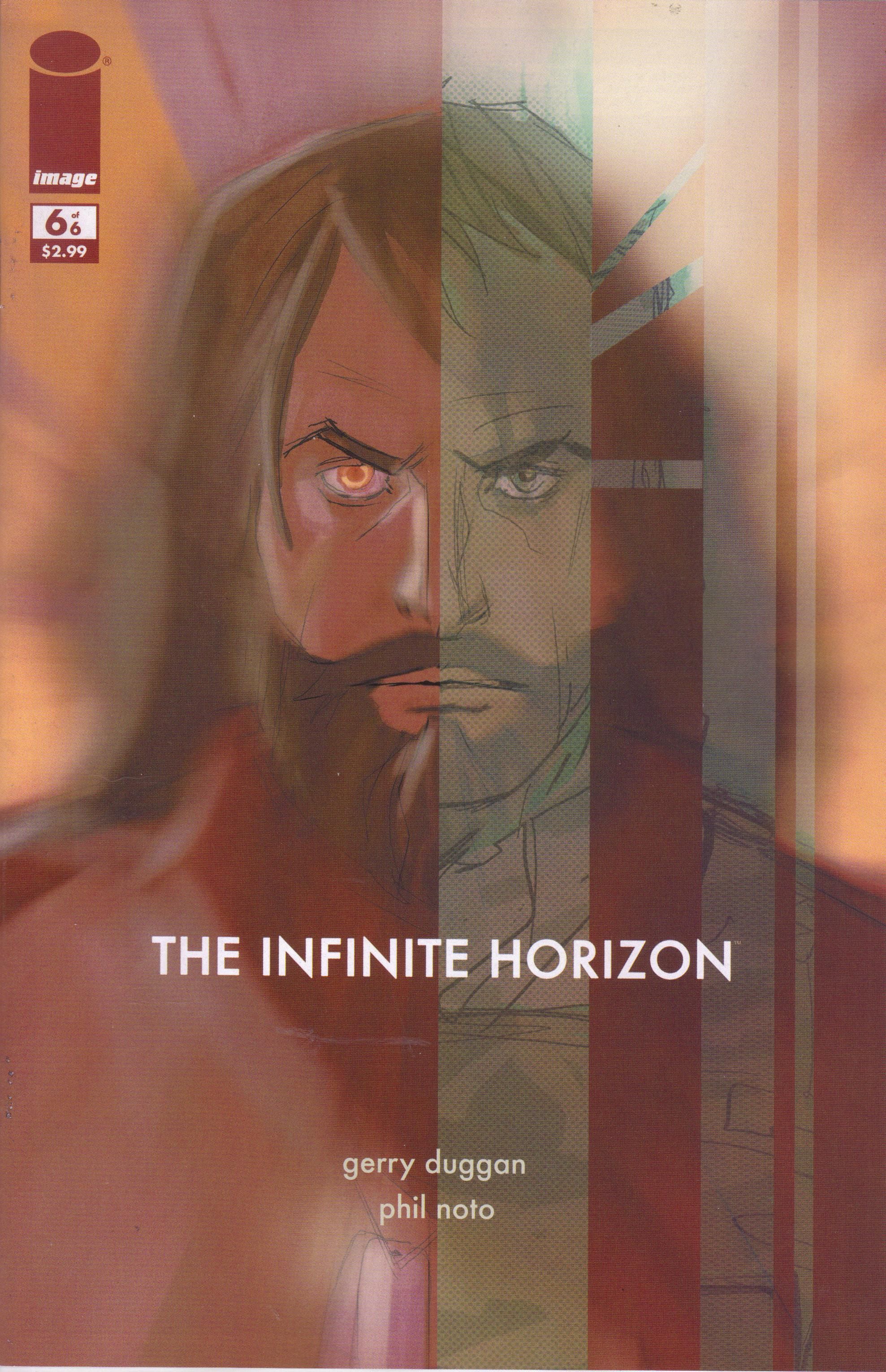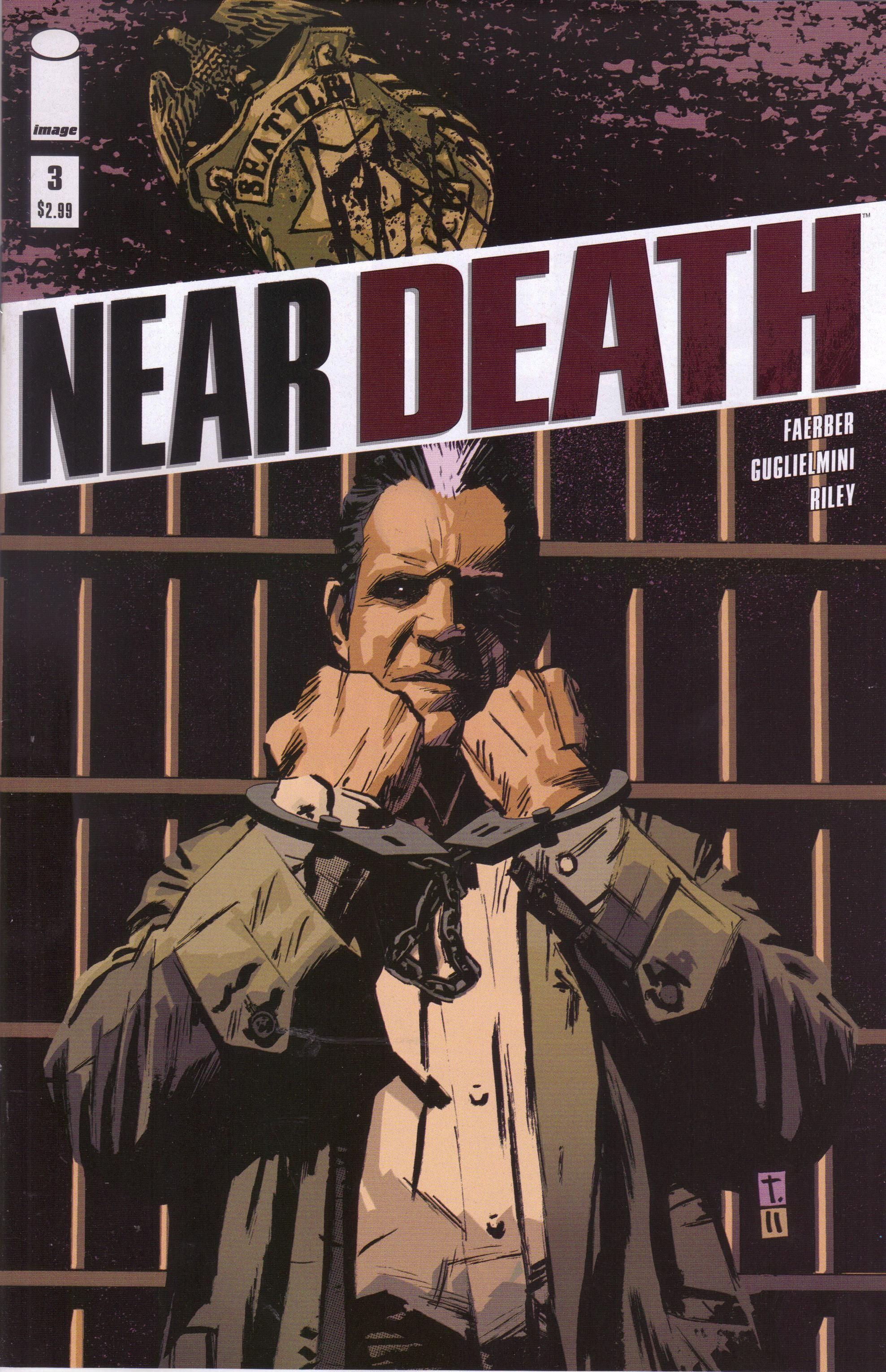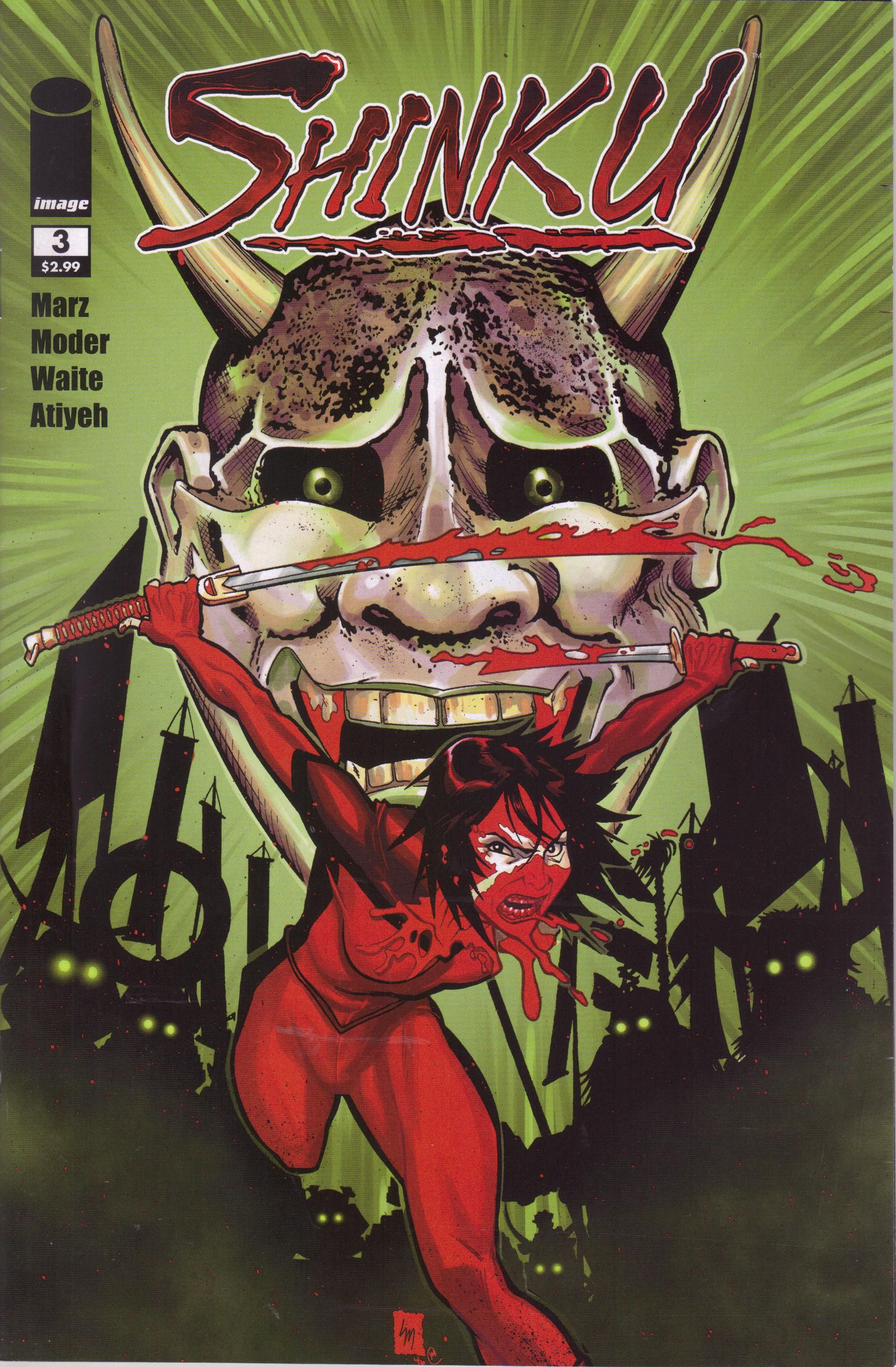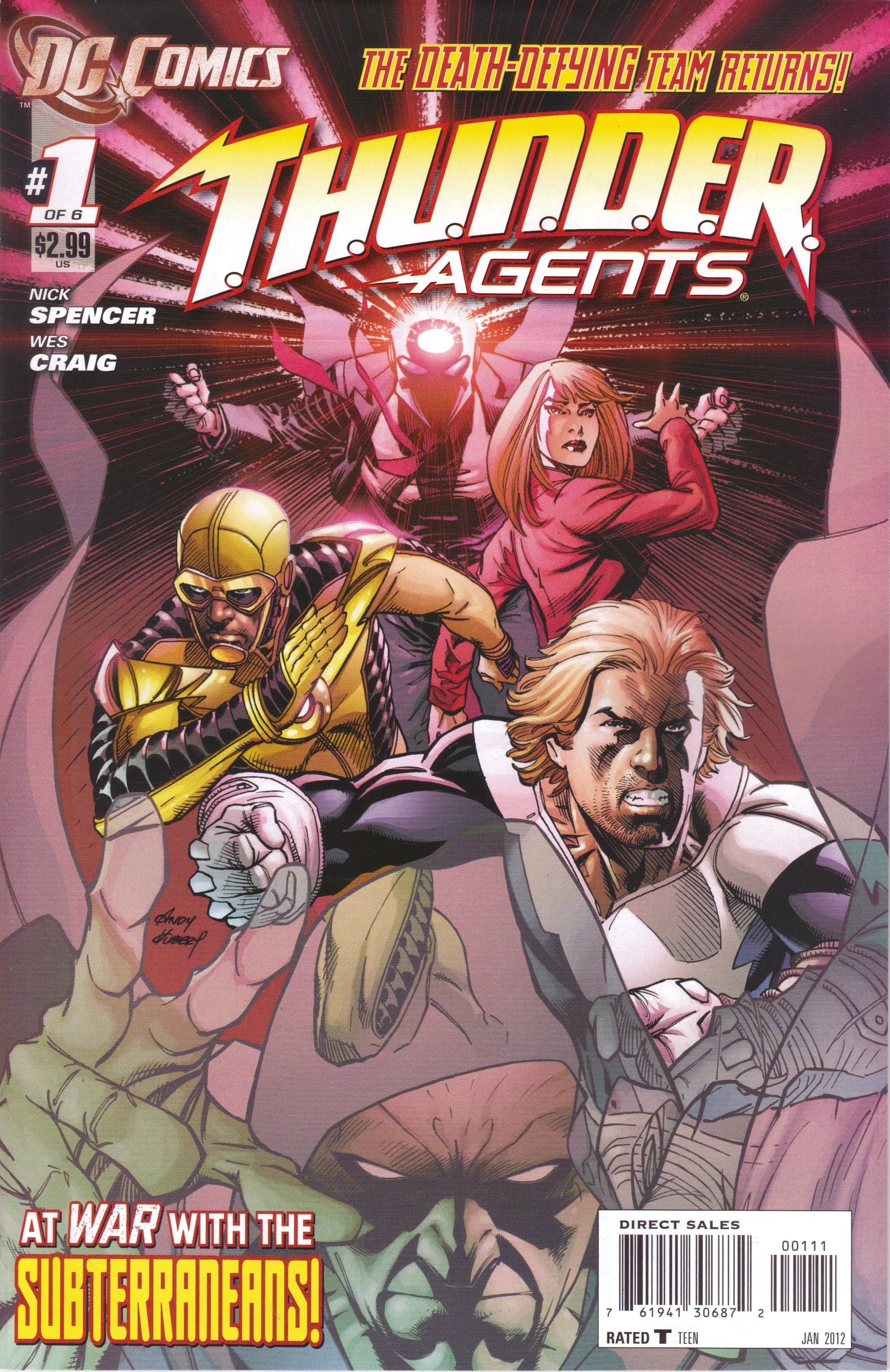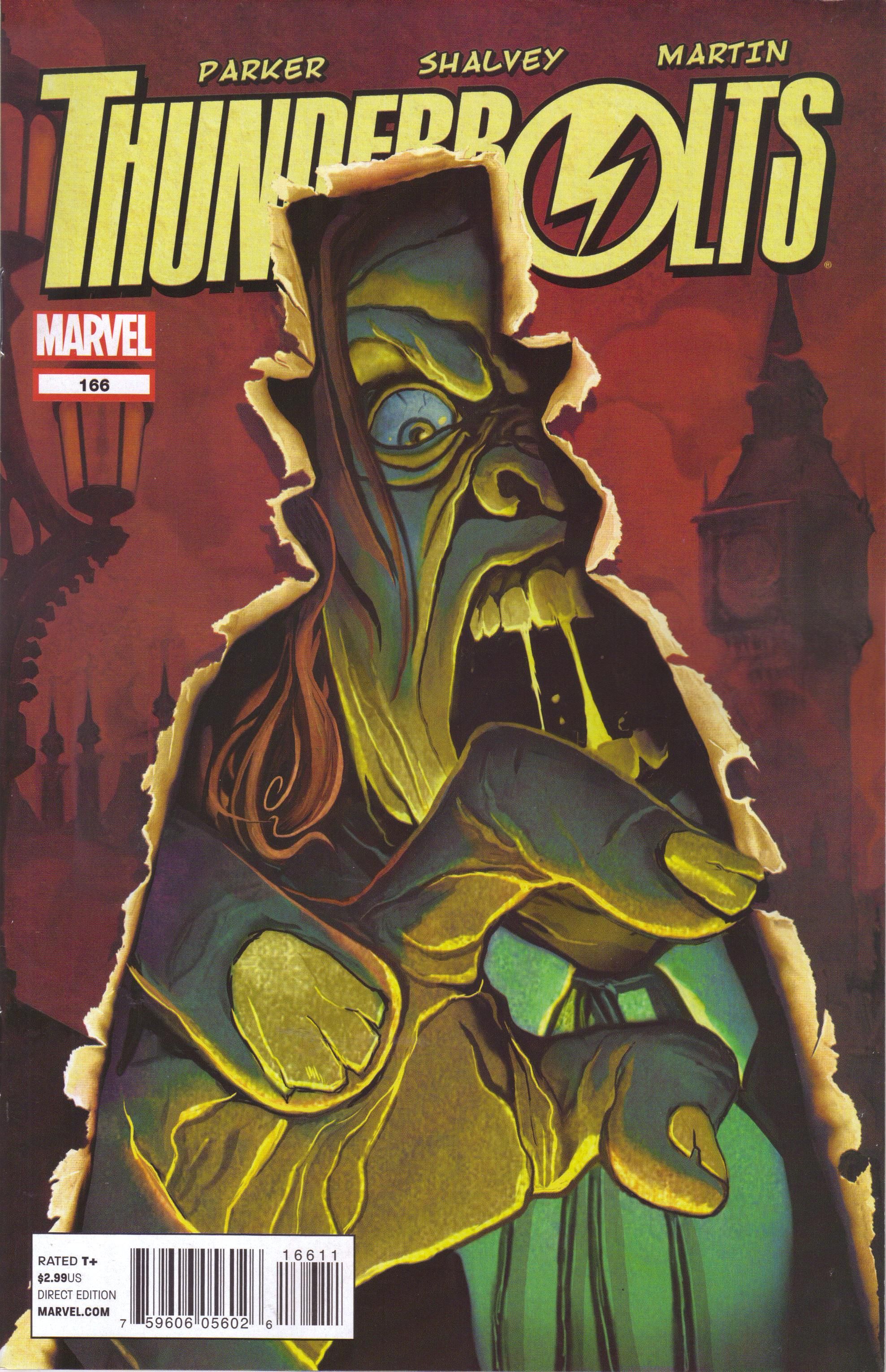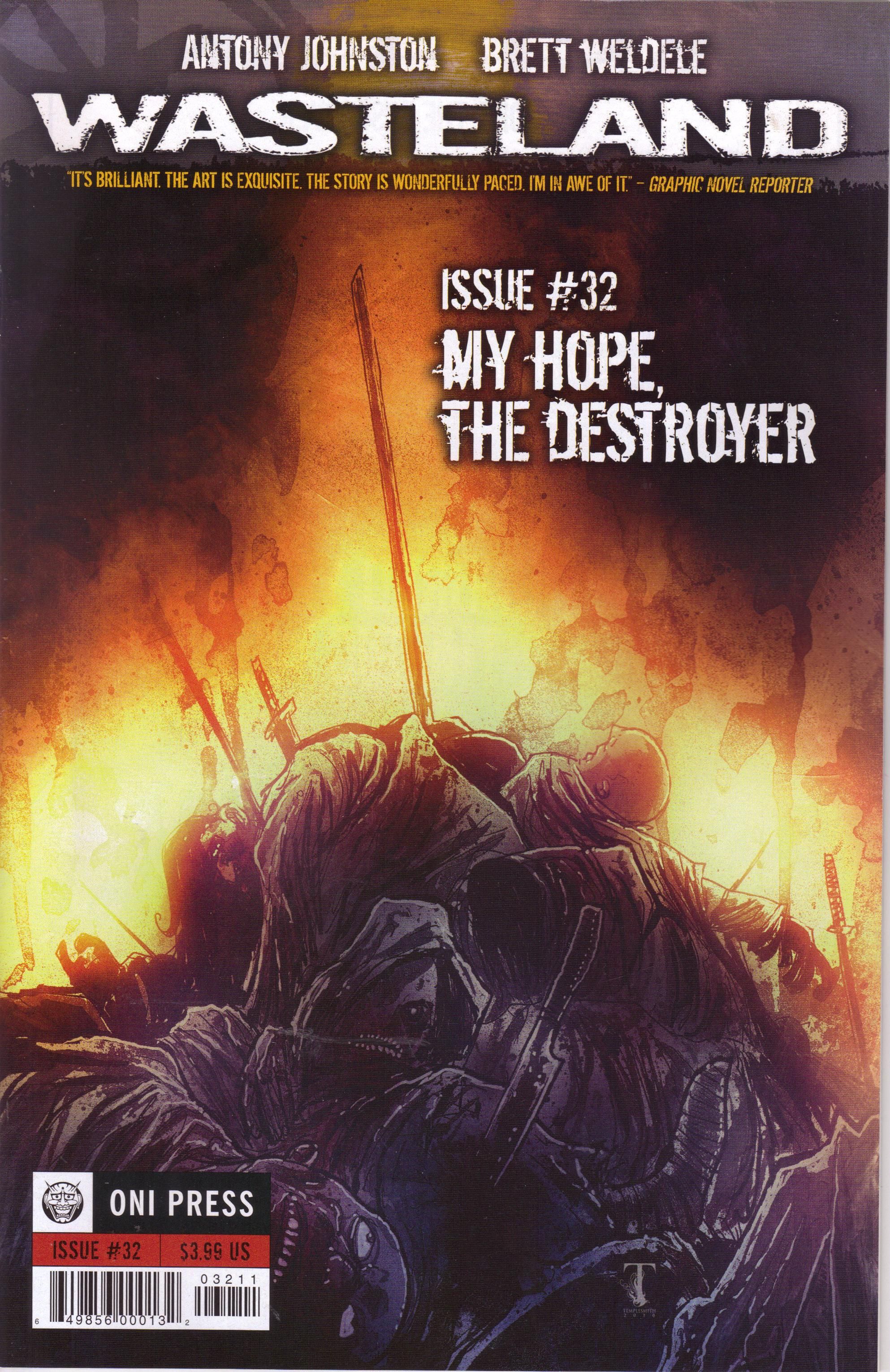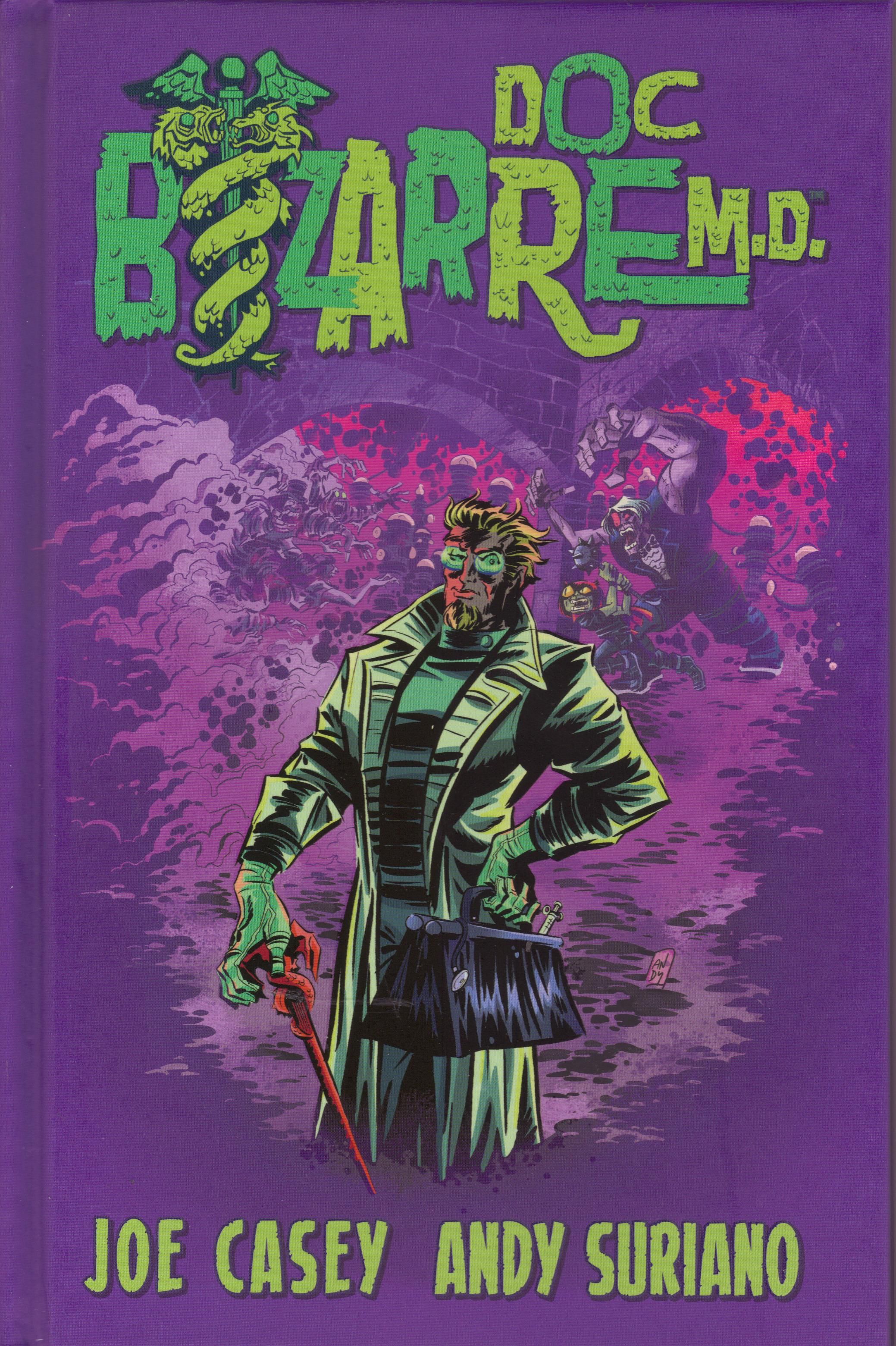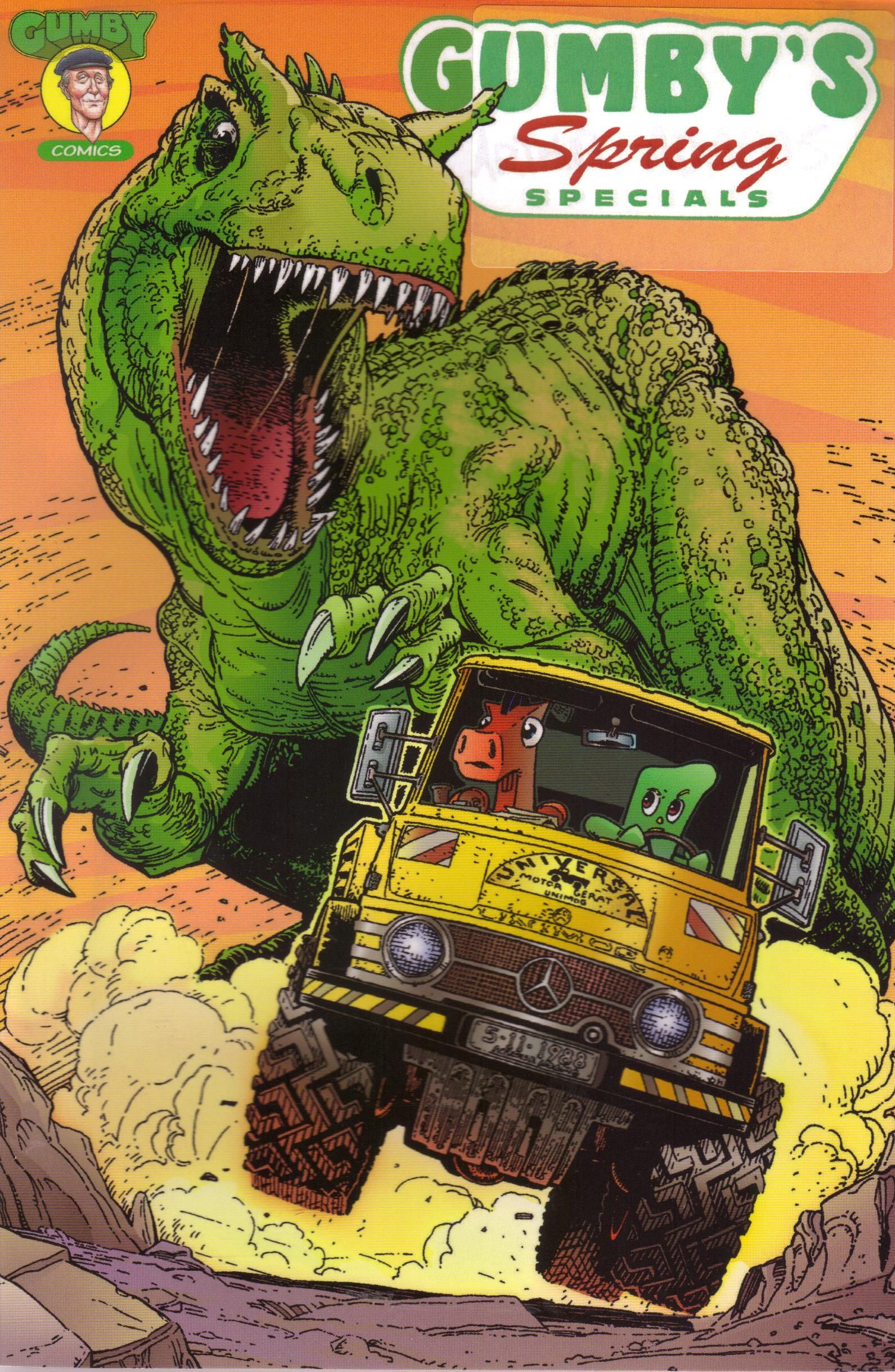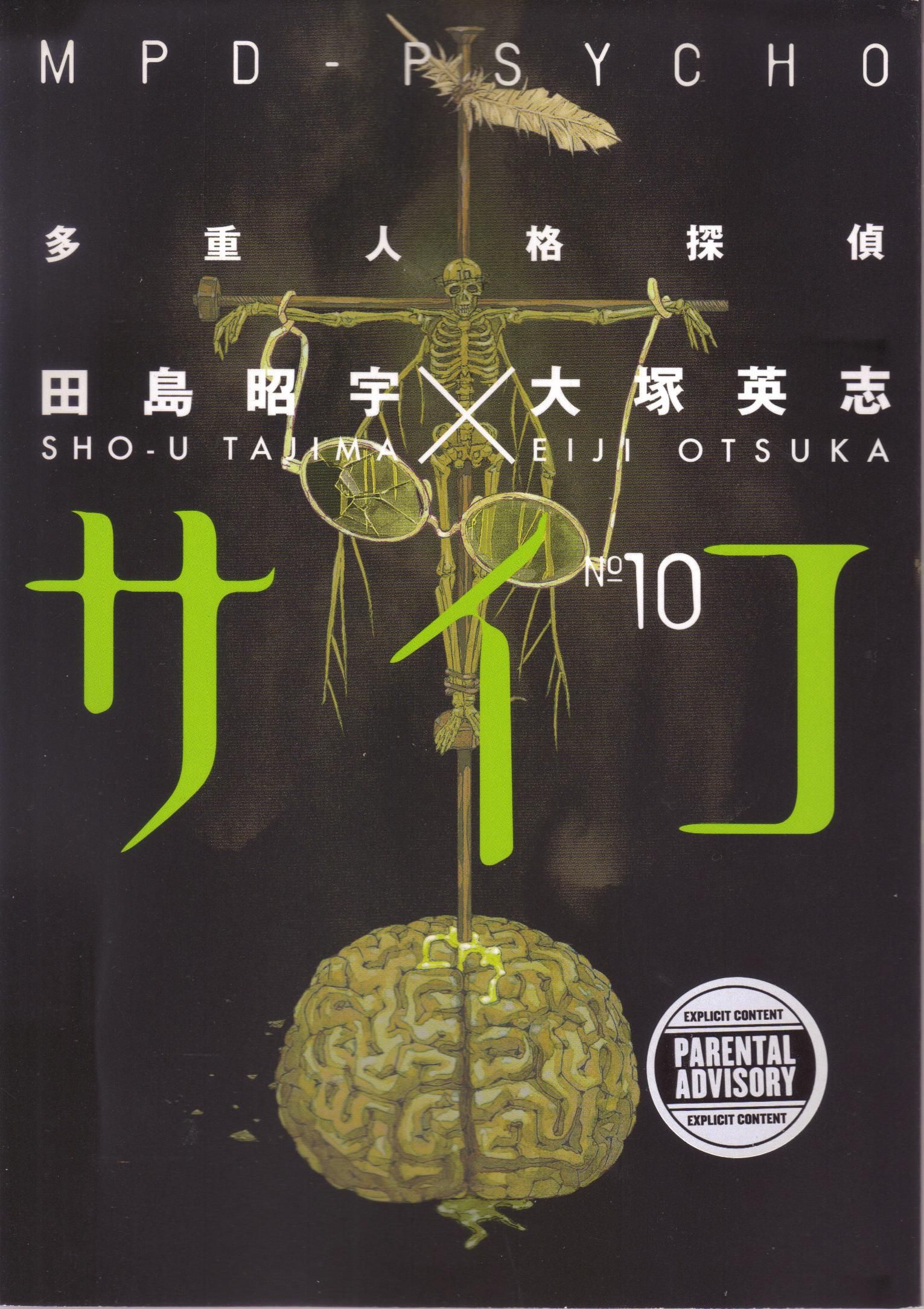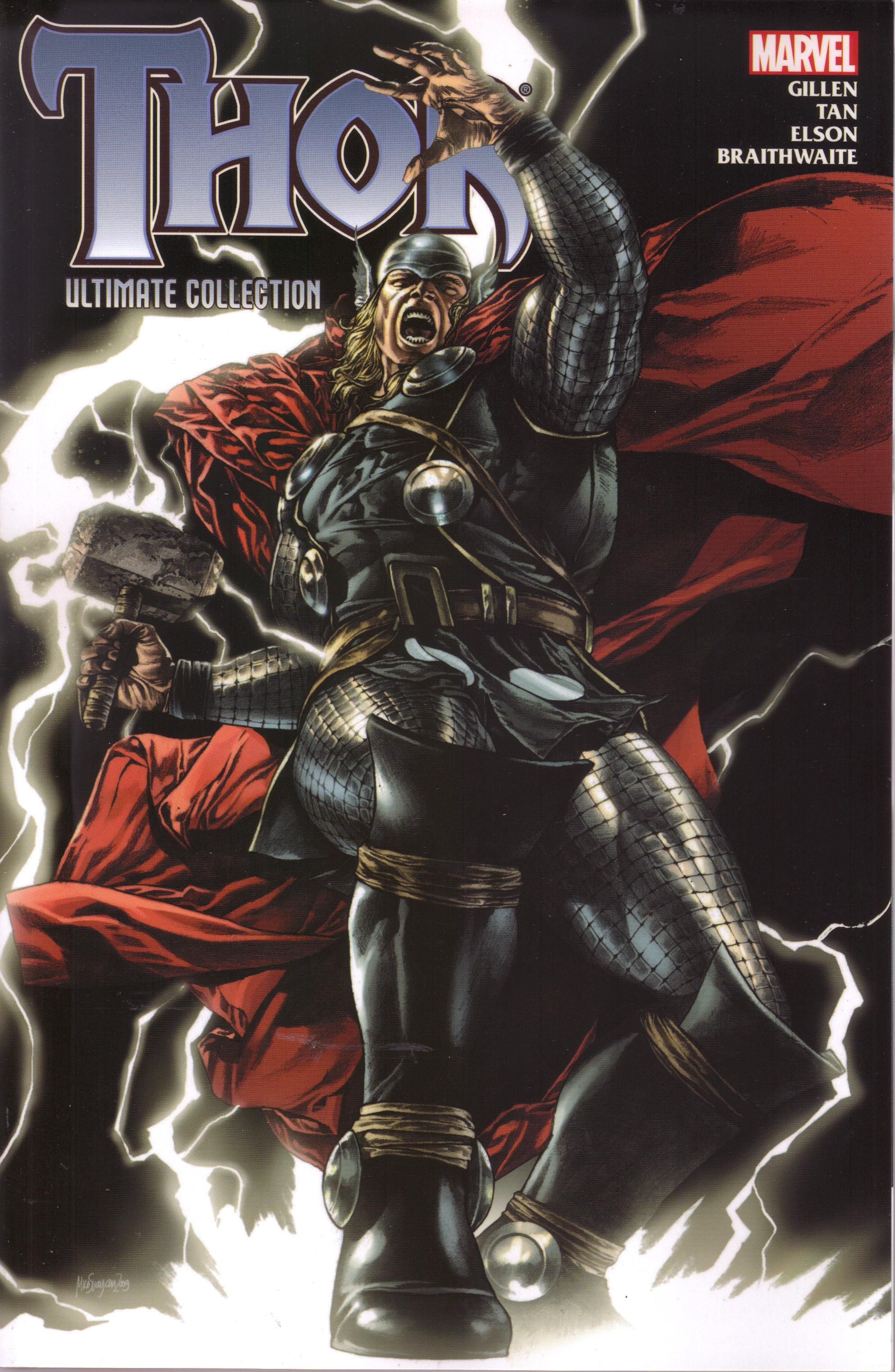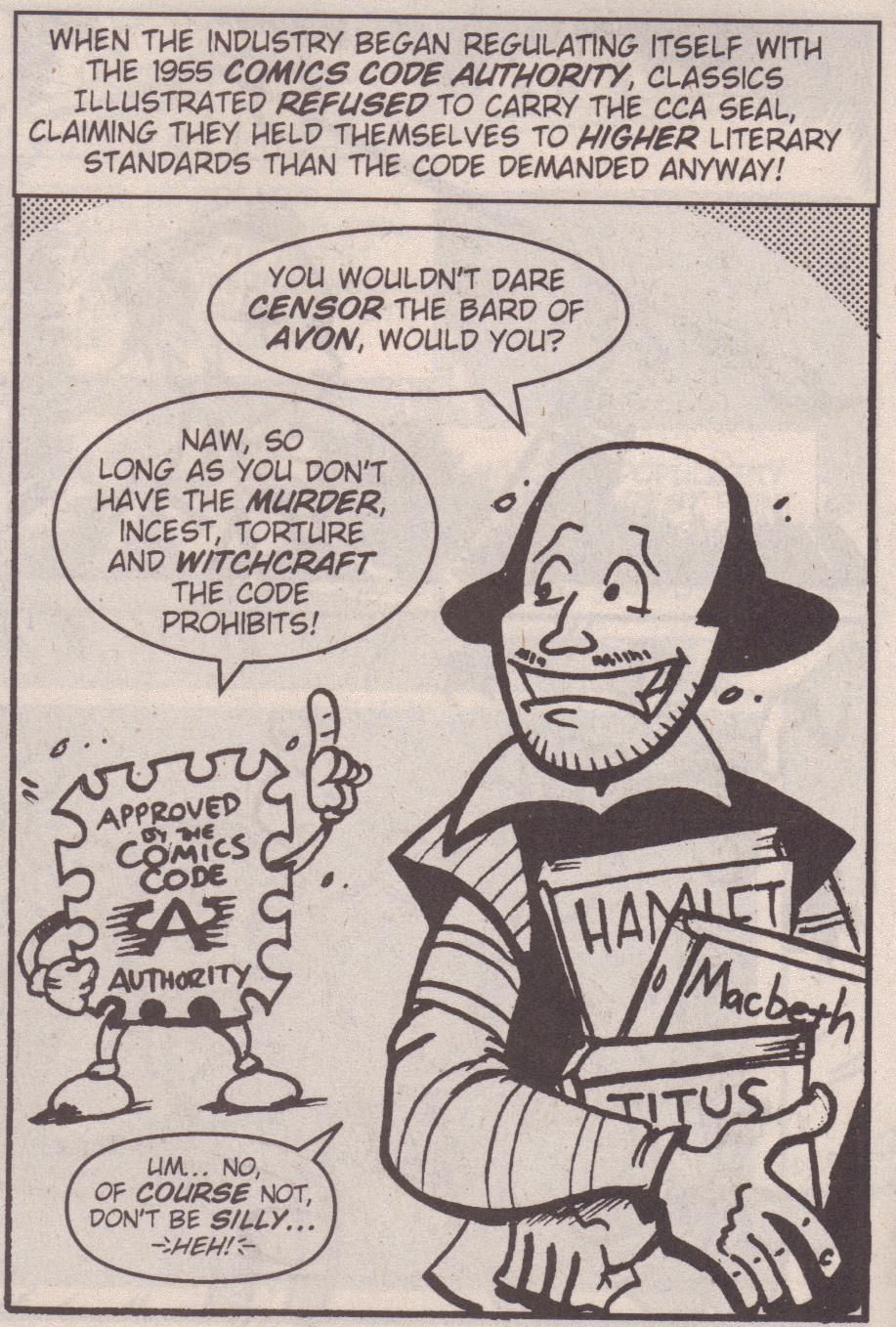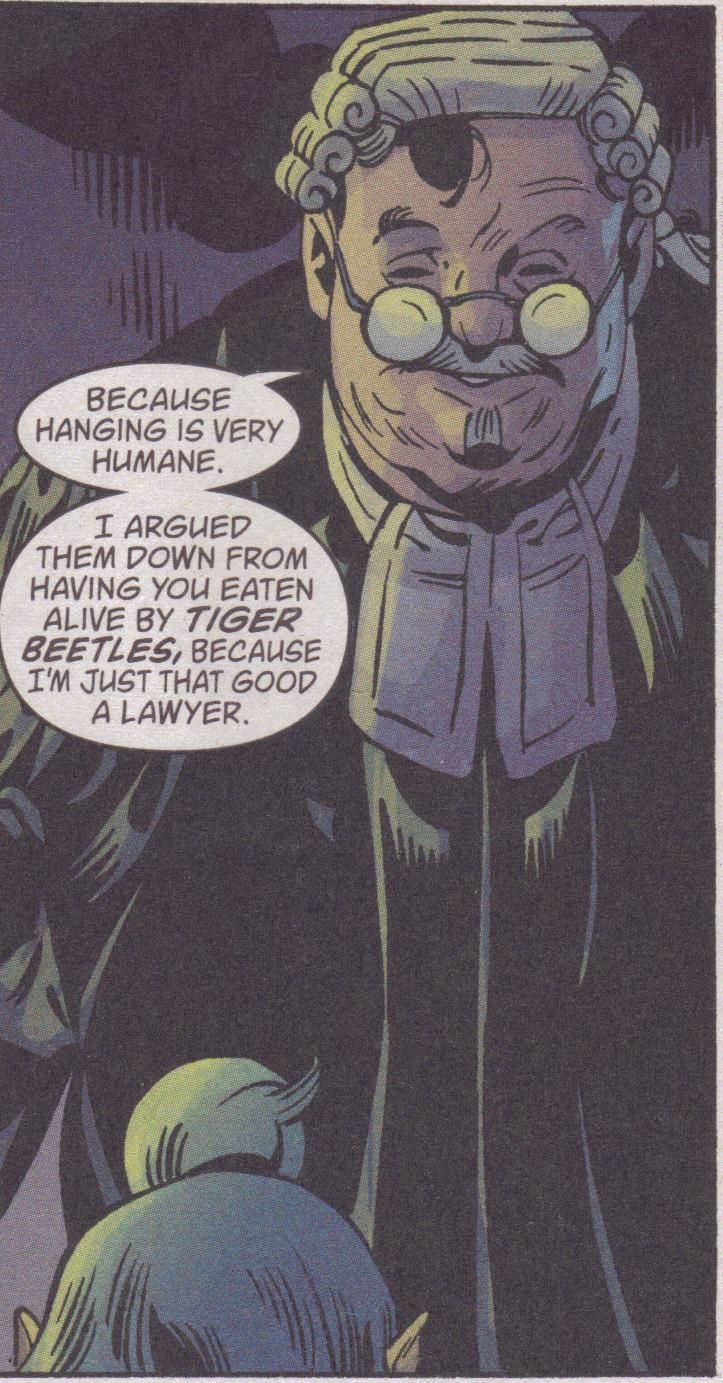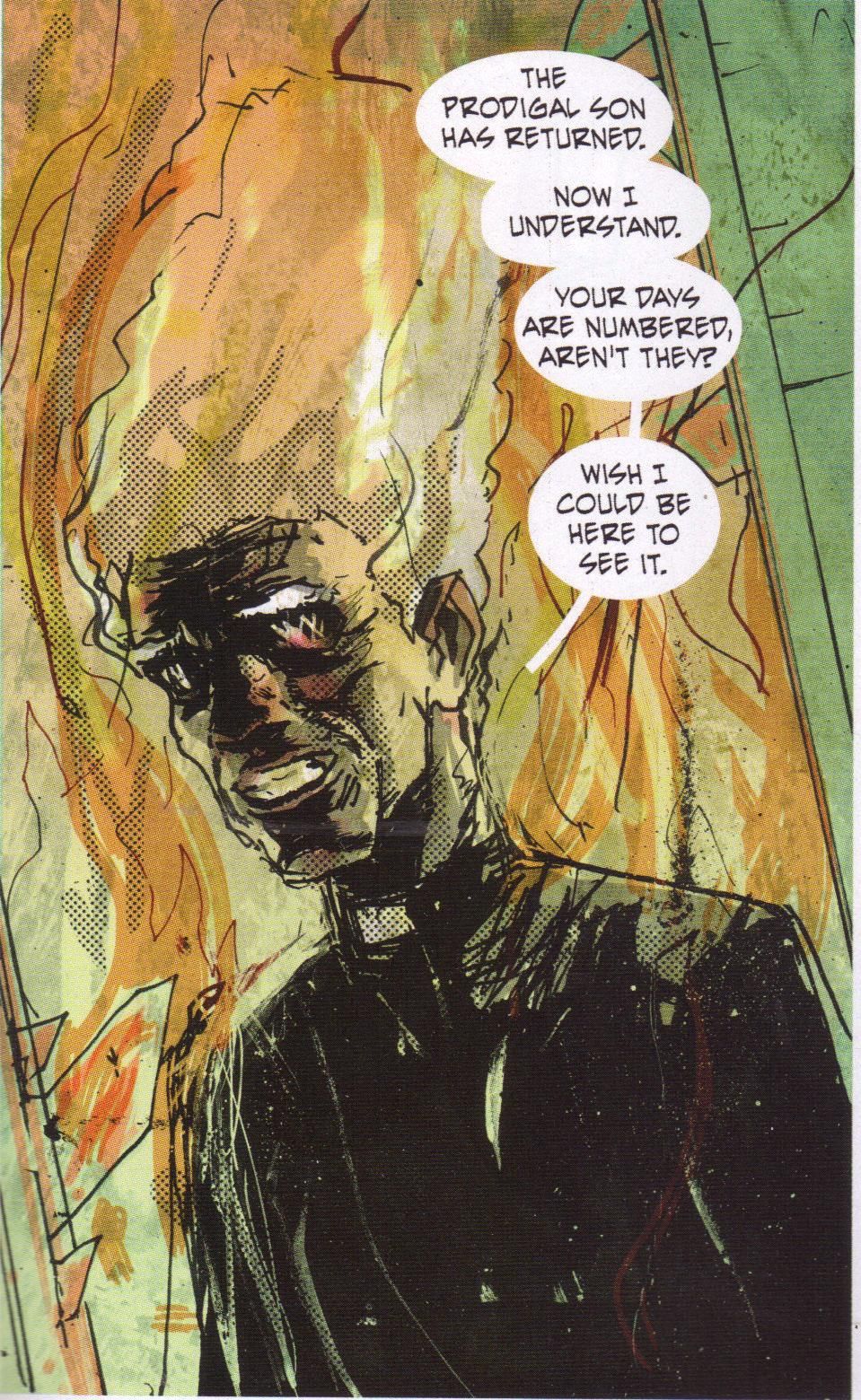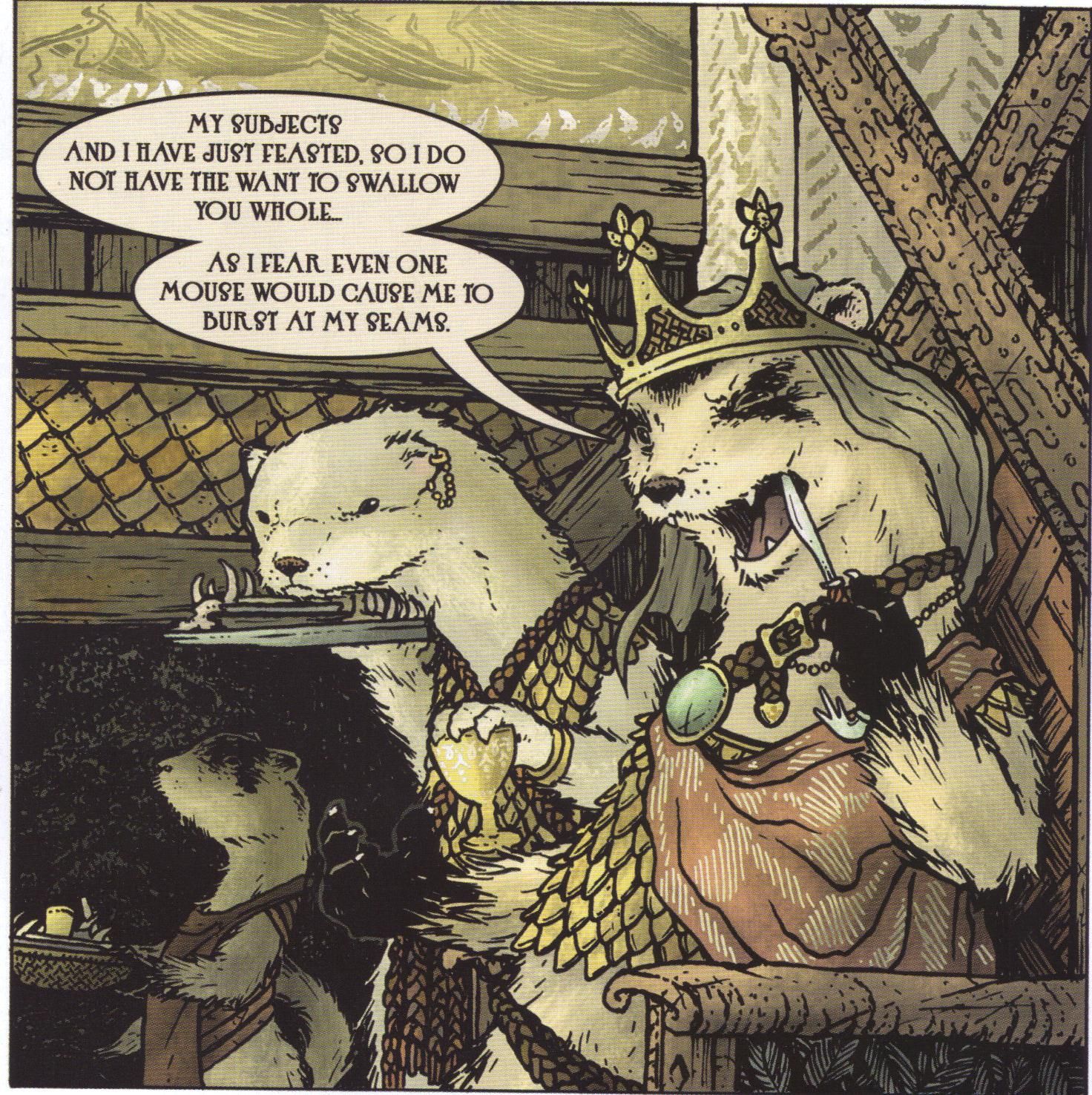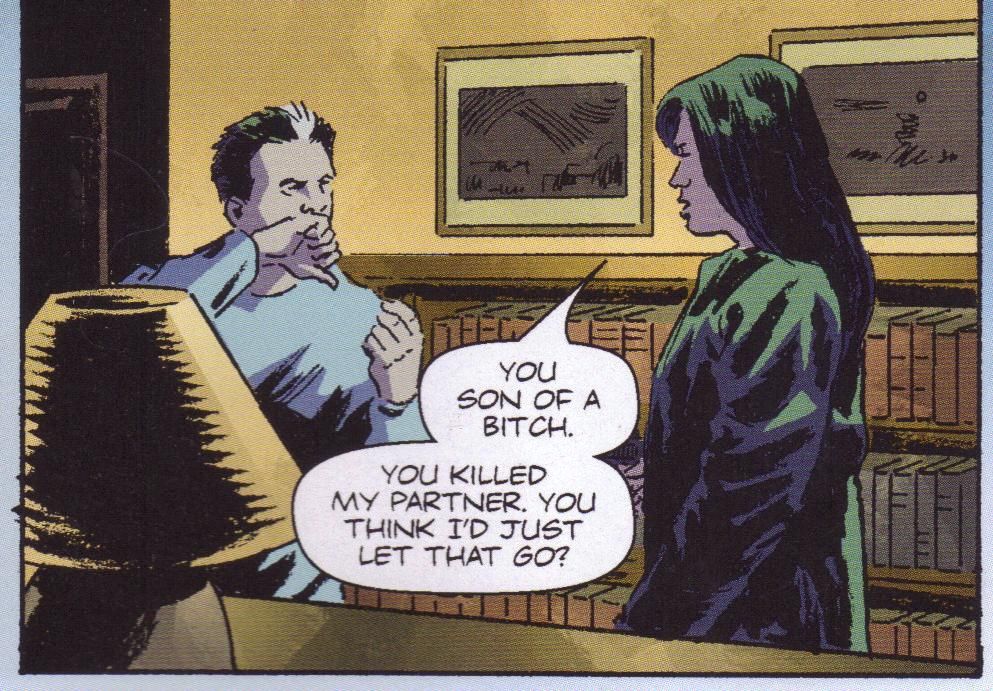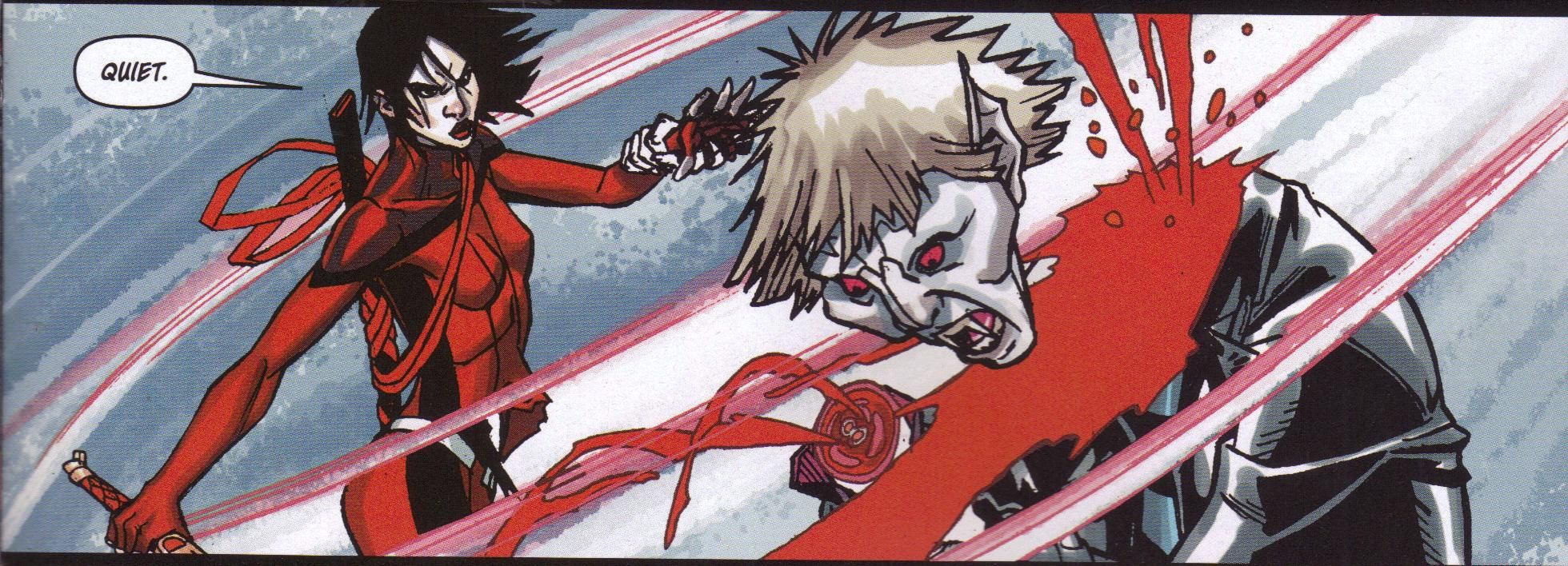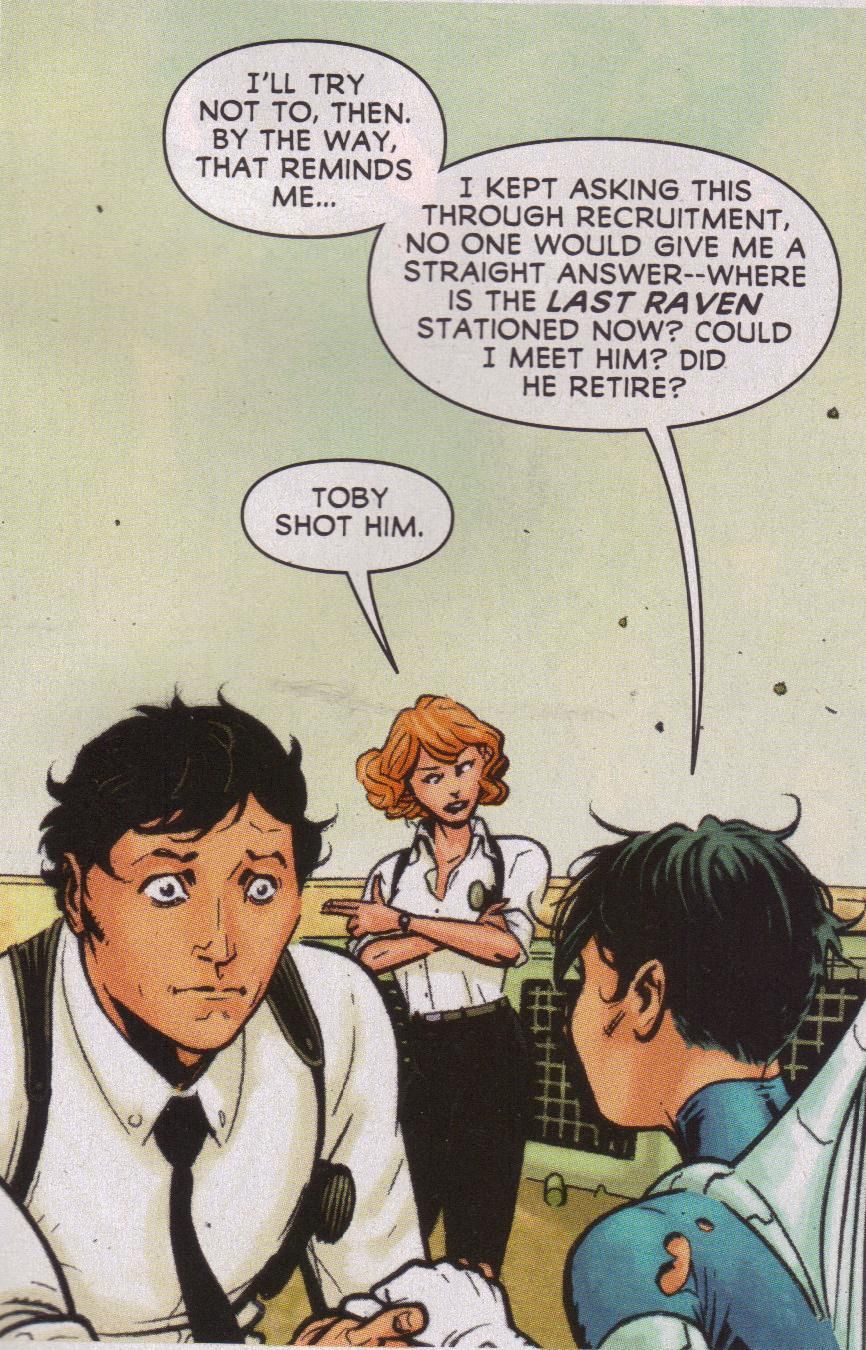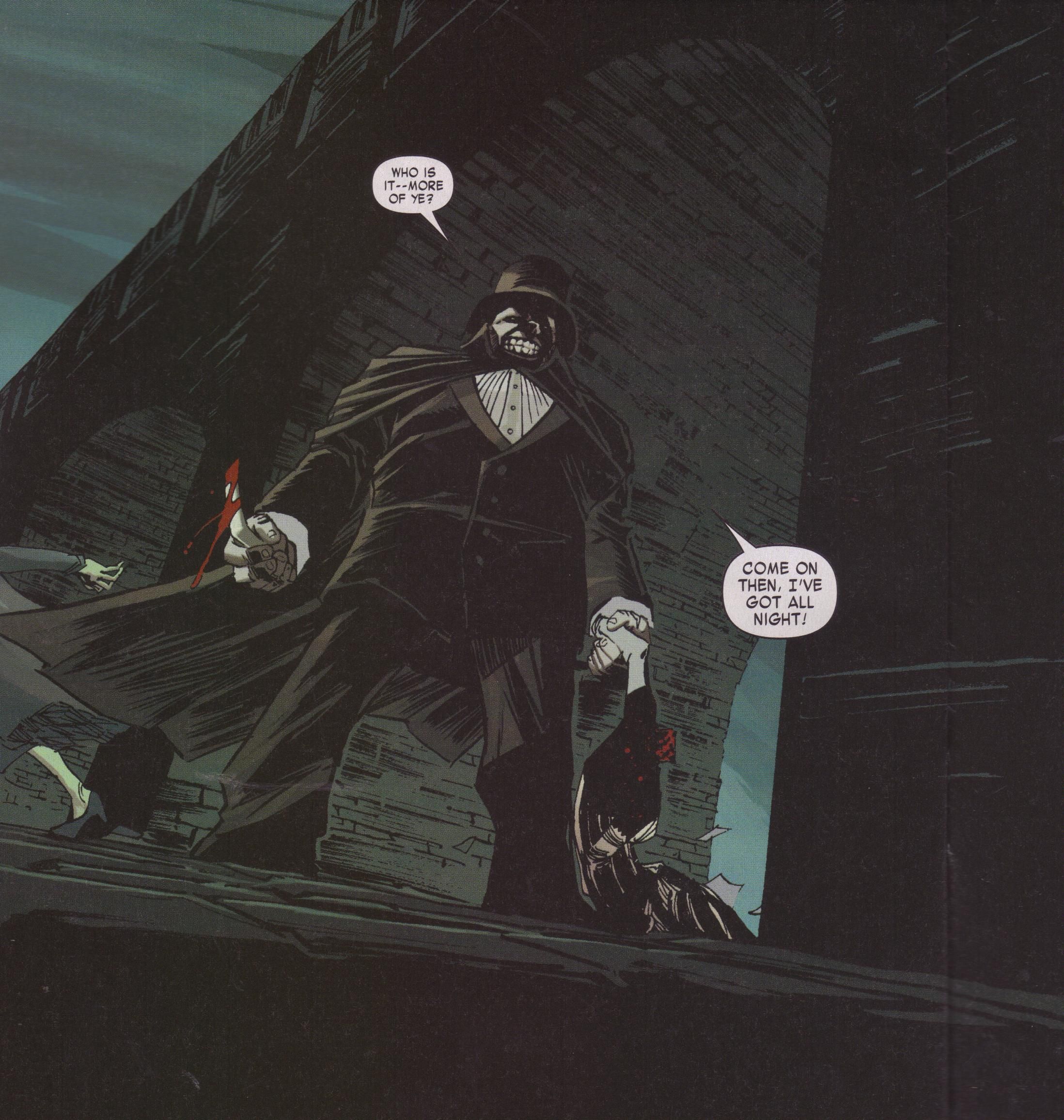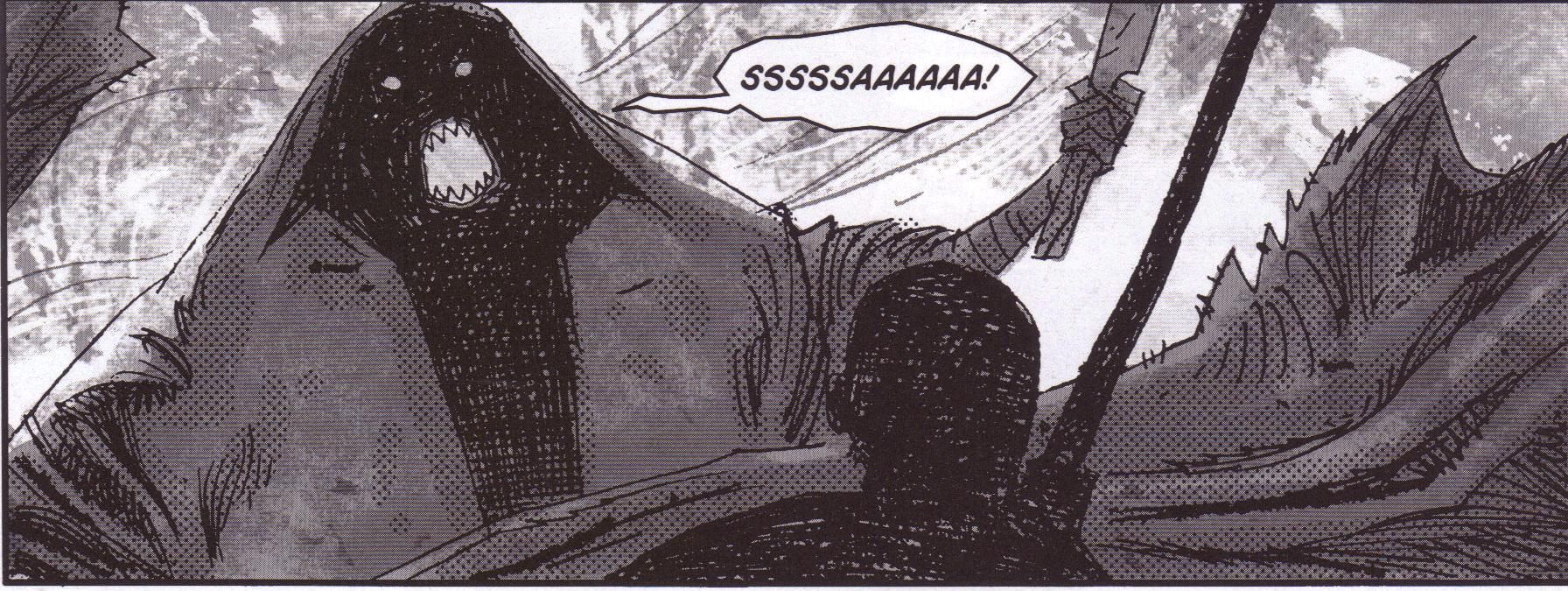"Maybe I'm crazy. But there's something in me that loves Death. I think of myself as Death, sometimes. In a scarlet shroud, floating through the night. I'm so beautiful, then. And sad. And hungry to make the whole world happy, by taking them out where I am, into the night, away from all trouble, all unhappiness ... Walter, this is the awful part. I know this is terrible. I tell myself it's terrible. But to me, it doesn't seem terrible. It seems as though I'm doing something - that's really best for him, if he only knew it. Do you understand me, Walter?"
"No." (James M. Cain, from Double Indemnity)
Comic Book Comics #6 (of 6) by Fred van Lente (writer) and Ryan Dunlavey (artist). $3.99, 40 pgs, BW, Evil Twin Comics.
Van Lente and Dunlavey's long-delayed mini-series comes to an end, and it's a bit more polemical than previous installments have been, mainly because the two creators are very passionate about creators' rights and not fucking comics creators over by pirating their work (gee, I wonder why). So the final section, which gets into the development of the direct market, the speculator bubble, and the Internet, is a bit more opinionated than previous sections have been. That doesn't mean it's not still a fun read - van Lente knows how to get to the heart of things, after all, and Dunlavey always has a blast drawing this stuff - but it's less historical, so nerves might be a bit raw. Prior to that, we get the evolution of graphic novels and different forms of the comic book over the years, and a section on manga (which focuses mainly on Osamu Tezuka, the actual "God of All Comics"). It's interesting that van Lente makes the case that manga's more expressionistic art has helped it appeal to more readers, while American comics' move toward more "realistic" art has ghetto-ized it. I'm not sure if that's true, but it's an interesting thought.
Anyway, as usual, Dunlavey crams a lot of panels on each page, but they're wonderful to look at and manage to keep van Lente's dense script from becoming too verbose. Comic Book Comics has never quite been as good as Action Philosophers!, mainly because it seems van Lente is trying to condense so much into these six issues, and it seems like it was harder to do than explain major philosophical themes in a few pages (which sounds ridiculously counter-intuitive, but there it is). Still, Comic Book Comics is an informative and fascinating read, mainly because van Lente, unlike writers of actual books on the subject who focus on an individual or genre, does try to link things together, creating a giant holistic vision of comics stretching back centuries. It's a pretty impressive achievement.
(I should mention the 3 Chicks' point about this series, that women are sorely lacking from the series. I don't mean to sound idiotic, but how many women are that important to the development of comics? In the modern age, sure, but van Lente and Dunlavey don't focus too much on the modern age, and when they do, they discuss someone like Alan Moore, who's almost peerless in modern comics. In terms of the history and development of the medium, who are the important women? Again, I'm not asking this to be snide, but with genuine curiosity. I haven't read a ton of comics history, but most general histories of the medium don't mention many women, either. I mean, is Tarpé Mills so important that she needs to get mentioned in a general history of comics? I don't know. I understand why Maddy, Sue, and Kelly would be vexed by the lack of women in this series, but I would ask them who they think is on par with Siegel and Shuster, Kirby, Lee, Ditko, Eisner, and Tezuka. I'd be fascinated by a book incorporating the great women of comics into the narrative, but I honestly don't know any. If anyone wants to chime in, feel free!)
Rating: ★ ★ ★ ★ ★ ★ ★ ½ ☆ ☆
One totally Airwolf panel:
Fables #111 ("Inherit the Wind Chapter Four: Windswept") by Bill Willingham (writer), Mark Buckingham (penciller/layouter), Steve Leialoha (inker), Shawn McManus (finisher), Lee Loughridge (colorist), and Todd Klein (letterer). $2.99, 20 pgs, FC, DC/Vertigo.
Fables is weird. It's not that I'm bored with it, like I've become with Invincible. It's still a very good book, but I have nothing to write about when it comes to reviewing it. Things happen, and the characters move on. One of the kids become the North Wind, the other three winds are still conspiring, Bufkin is in prison for conspiring against the emperor and he has one of the very worst lawyers EVER, and the issue actually ends on a cliffhanger, which, unlike many other issues that end rather oddly, at least is a step up. But everyone knows exactly what's going on with Fables, so there's not much point in writing about it. So I'll stop. Maybe next issue something will inspire me!
Rating: ★ ★ ★ ★ ★ ★ ★ ½ ☆ ☆
One totally Airwolf panel:
Green Wake #7 by Kurtis Wiebe (writer), Riley Rossmo (artist), and Kelly Tindall (letterer). $3.50, 22 pgs, FC, Image/Shadowline.
Morley learns a few more things about Green Wake, more people are murdered, and we see something fairly disturbing in the city's sewers. Par for the course! Wiebe continues to do a nice job giving the reader little tidbits of knowledge and some disturbing glimpses at what's going on in the town, both with the missing kids and Micah, who has a strange protector. So far, Wiebe is managing to create a mystery without being too mysterious. For now, he's pushed the frog angle to the background, but that's okay - they're still around, and it's clear that Wiebe hasn't forgotten them.
Rossmo turns in his usual stellar job, including two pages in the middle where Ishum tells Morley a story, and Rossmo changes his art style significantly to reflect that. It's a nice shift - we get ten, very thin panels spread out over the two pages, with simple, almost geometric drawings that look like hieroglyphics telling us something about Morley. It's nicely done, not only because it stands out from the rest of the book, but because the simplistic style lends a mythic quality to Ishum's story, which is probably the point. Rossmo is doing a very good job on this series, and it's neat that he's confident enough to shift styles like that to suit the story.
Anyway, Green Wake continues to impress. So that's swell.
Rating: ★ ★ ★ ★ ★ ★ ★ ½ ☆ ☆
One totally Airwolf panel:
The Infinite Horizon #6 (of 6) ("Homecoming") by Gerry Duggan (writer), Phil Noto (artist), and Ed Dukeshire (letterer). $2.99, 26 pgs, FC, Image.
Noto's retelling of The Odyssey isn't great, but it is pretty good, and a trade would be a nice treat. It was beset by scheduling problems, of course, but when it comes right down to it, it worked pretty well mainly because The Odyssey is such a universal story, and what was a way of life in ancient Greece but is frowned upon in modern society (the assumption that Penelope would simply marry another dude and the land would go with her) can be easily rejiggered to fit a futuristic setting where things have gone to shit. The most interesting thing about this comic is that where Homer's poem is mythic but presents a world that is ordered in some way, Duggan and Noto give us a world where society has broken down and the strong are simply trying to re-establish some sort of dominance. The implication is, of course, that society walks on a razor's edge, and while that's not a terribly unique argument to make (nor to prove; look around at the world and it becomes axiomatic), the fact that Duggan and Noto don't make it baldly but simply allow our soldier to move through this world and show us what is happening makes it more powerful. There's really never been any question that this book will have a happy ending, unless the creators diverged radically from the source material, but that's not really the point. The point of this is to show how society puts pressures on individuals and how individuals can fight back, and whether there's a happy medium where everyone can exist. Obviously, this society has gone too far, but Duggan and Noto do make the point that perhaps it's because the world has gone so wrong. Is the individual more important than society? Obviously, we would say 'yes,' but the interesting thing about placing this book in the future is that the question becomes more difficult to answer. In Homer's poem (if I recall correctly), Telemachus ("Terry" in this book) is far more important because "adoloscence" didn't exist until, really, the 20th century. Telemachus went from being a child to an adult, and he also seems much older in The Odyssey than he is here. Telemachus is more involved in the search for Odysseus and the defense of the homestead in ways that Terry can't be. One of Homer's point is not that the "suitors" were destroying society, but that they were ignoring proper procedure. In The Infinite Horizon, the question is whether the bad guys are right in trying to subsume the soldier's lands into their own for the good of society. They're wrong, of course, but it's interesting that Duggan and Noto bring up the question.
I'm glad this book is finished, because it's pretty keen and got better as it went along. The trade should be nice!
Rating: ★ ★ ★ ★ ★ ★ ★ ½ ☆ ☆
One totally Airwolf panel:
Mouse Guard: The Black Axe #3 (of 6) by David Petersen (writer/artist). $3.50, 23 pgs, FC, Archaia.
Archaia has gotten far behind releasing stuff again, and I worry about it. Mouse Guard is a wonderful comic, and I wonder if it doesn't sell as well as it used to because of the delays in publishing it. It could be all Petersen's fault, of course, but Archaia seems to be doing this with a lot of its books, and it's too bad. They publish a lot of excellent comics, and I wonder if they're slowly going to pieces again and we'll never get to read them. I thought they had sorted out all their problems, but I guess not. I like the fact that the company seems to be moving away from single issues and is releasing graphic novels these days (something I think every company should do, even DC and Marvel), but even those are very late. Mouse Guard reads very well in collected editions, of course, and I just hope Petersen can get this series finished and maybe move to only doing collected editions. Obviously, that might not be financially viable, but with the shape of the book and its tardiness, I can't imagine it's retained its readership from when it first came out - why should people buy flimsy, square-shaped issues when the hardcovers are so keen? Sure, you might have to wait much longer, but when you're waiting six months for a single issue anyway, it becomes easier to wait another year for the collected edition.
I don't know enough about the machinations of comics publishing to say definitively that Petersen would be better off not doing single issues. He would know, of course, what's best for him. I know that some people say it's better to do single issues no matter what, because you get paid twice - for the single issues AND for the collected editions. I don't know if that's how Archaia works (the people I've spoken to about it work for Image), but that's a weird way to do business. One would think paying the creator a sum to produce a work would be a way to go, and then, after holding onto it for a while, letting the rights revert to the creator (either a one-time publication deal or a length of time or something). The publishing business makes my head hurt, and I imagine the comics publishing business is even more byzantine than book publishing. I just think it's a shame that Mouse Guard, a superb fantasy series, might lose readership because of things out of Petersen's control. It really is a beautiful comic, and it's always fun to read.
Rating: ★ ★ ★ ★ ★ ★ ★ ½ ☆ ☆
One totally Airwolf panel:
Near Death #3 by Jay Faerber (writer), Simone Guglielmini (artist), Ron Riley (colorist), and Charles Pritchett (letterer). $2.99, 22 pgs, FC, Image.
For a book that isn't terribly flashy, Ron Riley has done a really nice job coloring this book. He's been doing a good job with the exterior nighttime panels, which aren't black but blue, and setting those off with a nice, warm yellow of lights in windows and apartments. Blue and yellow are foundational colors in comics (they're two of the four in the "four-color" world), mainly because they look very nice with each other, and Riley uses that to good effect. When Markham and Cahill are inside Markham's apartment, he continues this color scheme. The walls and furniture are yellow or brown, while Markham wears a pale blue shirt, making him slightly cooler in relation to the falsely welcoming glow in his apartment. Cahill, meanwhile, wears a yellow shirt under a blue jacket, and her black hair is tinged with blue (this ought to be called "the Superman effect," but it's not). It's a fascinating way to contrast the two of them - at this point, they're both on the outside of the law (because Cahill is trying to bring down crooked cops), but she's "warmer" than he is because she's not an ex-contract killer. Blue and yellow is also dominant during the day, when Markham and Cahill confront the crooked cops. Once again, Riley colors the people blue-ish while the walls are yellow. Because it's during the day, the yellows aren't as warm nor the blues as cool, but it's still an interesting contrast. The fascinating thing about the coloring is that it's so simple but so effective. Riley doesn't do anything fancy, but he still affects the mood of the book as much as Faerber or Guglielmini do. Don't ignore the coloring on comics, people!
Rating: ★ ★ ★ ★ ★ ★ ★ ☆ ☆ ☆
One totally Airwolf panel:
Shinku #3 ("Throne of Blood Part 3") by Ron Marz (writer), Lee Moder (artist), Matthew Waite (inker), Michael Atiyeh (colorist), and Troy Peteri (letterer). $2.99, 22 pgs, FC, Image.
Speaking of colorists, Marz pointed out that colorist Atiyeh had some health issues in his family, so issue #3 of Shinku was delayed. I hope he worked everything out - I'm sure we all know about health issues in our family in one way or another, and it's never any fun. So Shinku, which is a few months late, is back on track!
Here's what I don't understand about comics. Let's say you really liked Voodoo, which Marz is writing (not for long, in case you hadn't heard, but for now). Now, why do you like it? Do you have a great affection for the character? Do you love Sami Basri's art? Do you like the writing? As always with Big Two versus Everything Else, I don't understand why a book that Marz writes for DC which is, frankly, lousy (sorry, Mr. Marz!) sells so much more than a book he writes for Image which, after three issues, kicks a whole shitload of ass. Is it Basri's art? I don't like Basri's art and think Lee Moder is doing some of the best work of his career on Shinku, but that's just one opinion. As always, I think it's only the fact that comics readers are still, after all these years, obsessed with the concept of one big clockwork universe, where everything fits in somewhere. Maybe Batman will show up in an issue of Voodoo, and then comics fans can obsess where that "fits in" with all the other Batman appearances! Sigh. If you're a fan of Marz, why wouldn't you read Shinku? I've ranted about this before with regard to a LOT of creators (this I shall dub "the Phonogram dilemma") but that doesn't mean it's not relevant.
Anyway, Marz slows things down slightly in this issue, as Davis tries to figure out a medical solution to the vampire problem (basically, Shinku wants him to create a virus to kill vampires) and discusses his savior with one of her minions (I totally want minions, but I'm just not cool enough). Asano, the head vampire, sends a supercool vampire assassin, Sakura, after our heroine. So of course, at the very end of the issue, we get some bloodletting.
Moder continues to dominate on the artwork - he's especially good at making the Japanese characters look Japanese without resorting to stereotypes. Plus, the action flows so well that it looks almost like it's in motion. Atiyeh's contributions are evident, too, and it's not surprising that Marz decided to hold up the series instead of getting another colorist. Shinku's bright red jumpsuit is a superb costume, especially as a symbol for the buckets of blood she spills, and those bright colors offset her pale skin and the vampires' even paler skin. In the two pages where Davis speaks to Oshima about Shinky, Atiyeh softens Moder's/Waite's stark lines with more nuanced tones, indicating both the slowdown in action and the neon wash of Tokyo as they drive through the city.
I'm glad that Shinku is back, because it's a really exciting book and it shows, once again, that most people do their best work outside the strictures of the Big Two. In issue #1 of Voodoo, Priscilla Kitaen was vapid and bland (she may have changed since then) until she ripped some dude apart bloodlessly. In Shinku, the heroine is fascinating, full of personality, and makes sure her victims gush blood. Come on - which do you think is the better comic?
Rating: ★ ★ ★ ★ ★ ★ ★ ★ ☆ ☆
One totally Airwolf panel:
T.H.U.N.D.E.R. Agents #1 (of 6) ("Uprising") by Nick Spencer (writer), Wes Craig (artist), Hi-Fi (colorist), and Jared K. Fletcher (letterer). $2.99, 20 pgs, FC, DC.
If you've been paying attention, you might have noticed that I'm buying almost none of the new DC comics. I still love Batwoman, but I'm pretty sure that next week I will be skipping Action Comics, and those were the only two I was buying in single issue format. As I have mentioned, since DC made it so easy for me to switch to trades, I will take them up on it.
So why am I buying T.H.U.N.D.E.R. Agents, the new six-issue mini-series from the conglomerate? It's a mini-series, which I've been ignoring in favor of trades for a while now (at least those from the Big Two), plus it's after the reboot. Well, if you recall, I bought Spencer's series pre-reboot, and while it ended kind of poorly, it was an intriguing concept. So I view this as a continuation of that series, and as I'm buying Batwoman for the same reason (it's a continuation of the pre-reboot series) and will buy Batman, Inc. when it shows up, I figured I'd pick this up just so I don't have half the series in single issues and half in trade. IT MAKES PERFECT SENSE, STOP LOOKING AT ME LIKE THAT!
Anyway, I'm still gobsmacked by the Svengali-like hold Nick Spencer has over editors. He didn't create the T.H.U.N.D.E.R. Agents, yet even after signing an exclusive with Marvel AND DC doing a reboot AND the initial series not exactly setting the world on fire, sales-wise, DC lets him do a six-issue mini-series with the characters. That's just bizarre. As I've said before, more power to him, but I wonder why on Earth someone at DC greenlit this. How does Spencer do it?????
The previous series kind of staggered to the finish line, as Spencer drew out Colleen's vendetta against her mother far, far too long (it was a two-issue story, max, yet it lasted, what, four issues? five?) but managed to corral some good artists to draw it. With that behind us, he brings us a main story of the Agents acting as police protection in "Subterranea," an underground kingdom where they're having a Mardi Gras-esque celebration. In the middle of this, a bad guy shows up (he's an old villain from the 1960s series, but right now, that's not important) and starts killing people. Oh dear. Meanwhile, Colleen and Toby are evaluating a new member of the group, and then they get into what exactly the Menthor helmet does to the wearer's brain. Spencer only gives us three pages of "infodumb," so it's not too egregious, and at least it's kind of interesting (in a bullshit, pseudo-science kind of way). Spencer does a nice job with the dialogue, especially after Colleen and Toby see Breathless together and she doesn't quite get it (I laughed at the dialogue, even though I'm sure it works better if you've actually seen the movie, which I haven't). So for this issue, at least, it's "good" Nick Spencer - the guy who doesn't take too long to get to a point and creates interesting characters (even though he's only building on what he did in the previous series, he still does a good job).
He's helped by Craig, who is more cartoony and organic than CAFU - I like CAFU's art, but occasionally his thin line makes characters (especially Colleen) look like porcelain dolls. Craig does a nice job with every aspect of the book - the weirdness of the Subterranean celebration, the action scenes, the flashback when Colleen talks about the helmet, and the way Toby and Colleen flirt with each other. I honestly don't remember if I've ever seen Craig's art before, but it's very good in this issue. I assume he'll be the artist for the entire mini-series, which will be nice, because the previous series did suffer a bit from too many artists, even if they were all talented.
So that's T.H.U.N.D.E.R. Agents. At least Spencer seems to be using his strange powers for good!
Rating: ★ ★ ★ ★ ★ ★ ★ ½ ☆ ☆
One totally Airwolf panel:
Thunderbolts #166 ("The Ripper Tour") by Jeff Parker (writer), Declan Shalvey (artist), Frank Martin (colorist), and Joe Caramagna (letterer). $2.99, 20 pgs, FC, Marvel.
Parker continues to indulge his love for other genres and time periods, as he got World War Two story out of the "Thunderbolts Trapped In Time!" saga, and now he posits that Mr. Hyde was actually Jack the Ripper, killing prostitutes because of something to do with Satana, apparently (if the last page is any indication). Frederick Abberline and Adolphus Williamson discover the rest of the T-Bolts' presence in 1888, and they decide to trust our intrepid anti-heroes, who need help taking Hyde down. Meanwhile, in the present, Valkyrie explains how she can track Troll's Asgardian axe, and the rest of the 'Bolts get to work! This issue is about as fun as a story that centers around a madman killing prostitutes can be: Parker and Shalvey don't shy away from the violence - see below - but they allow Boomerang, for instance, to go full Aussie stereotype, which is enjoyable. Shalvey, as usual, is very good - his style fits very nicely with gloomy, foggy, late-Victorian London - and his final page is seriously creepy.
I guess in the great Marvel cancel-a-thon of 2011, Thunderbolts is on the chopping block, so who knows how long it's going to last. Oh well. It's still a very enjoyable comic, so I will do that as long as it lasts!
Rating: ★ ★ ★ ★ ★ ★ ★ ☆ ☆ ☆
One totally Airwolf panel:
Wasteland #32 ("My Hope, the Destroyer") by Antony Johnston (writer), Brett Weldele (artist), and Douglas E. Sherwood (letterer). $3.99, 23 pgs, BW, Oni Press.
Johnston gives us one of his standalone issues that fills in some of the back story of the world of Wasteland and what's going on outside of the main characters. In this case, he checks in on a survivor of the massacre of Ameer's caravan way back when. She ends up with some Sunners who escaped from Newbegin, and we find out what happened to them after Golden Voice sent them away. When you're out in the desert, things tend to end poorly, and while Johnston's story isn't that bleak, shit still crops up. It's a nice little story about what some people will do in order to survive and what others will do to help them survive, and it will add a bit to the story of the previous arc, in which Golden Voice fomented rebellion in Newbegin.
Weldele, like Mitten, is the perfect artist for a book like this, because his stark linework makes the desert setting feel bleak, hot, and generally unpleasant, but he can still do nice work with expressions and movement. His work tends to look better in black and white, so this is a nice fit for him, as well. Next issue the new artist, Justin Greenwood, takes over, but it's nice to get a look at what Weldele brings to this series.
Wasteland seems to be back on track, and I'm sure Johnston is happy about that, because I know how much he enjoys writing it and how much he has planned for it. I'm just hoping it stays on course!
Rating: ★ ★ ★ ★ ★ ★ ★ ☆ ☆ ☆
One totally Airwolf panel:
Doc Bizarre M.D. by Joe Casey (writer), Andy Suriano (artist/colorist), and Rus Wooton (letterer). $17.99, 59 pgs*, FC, Image.
* The story is 59 pages long. The book is packed with a lot of sketches, page breakdowns, promotional material, and other stuff, but I usually don't count those, and I'm not now!
I'm trying to remember if Casey told me about this book in 2009 or 2008. Whichever, it's been in the pipeline for a while. I'm glad it's out - it's very cool-looking. I'm sure Chad Nevett has already read it three or four times, but it will be a little bit before I do. Still, it looks keen!
Gumby's Spring Specials* by Bob Burden (writer), Steve Purcell (writer), and Arthur Adams (artist). $12.99, 82 pgs, FC, Gumby Comics/Wildcard Ink.
* This was originally called the "Arthur Adams Specials," but they changed the name. Why, I don't know. The funniest thing is that it collects the Summer and Winter Specials, so the title makes no sense, plus they simply placed a sticker over the cover, blocking out the "Arthur Adams Specials" logo and replacing it. How weird.
MPD-Psycho volume 10 by Eiji Otsuka (writer), Sho-U Tajima (artist), Kumar Sivasubramanian (translator), Philip Simon (English adapter), and Steve Dutro (letterer). $12.99, 196 pgs, BW, Dark Horse.
Yay, it's back! Maybe Dark Horse will be able to finish it up. Of course, now they've stalled on delivering The Kurosagi Corpse Delivery Service, which sucks. You know, I don't read a ton of manga, but I wish the series I do read would show up regularly. Gantz and 20th Century Boys can show up regularly, why can't the others?
Thor by Kieron Gillen Ultimate Collection by Don DeLillo (writer) and a crapload of artists. $34.99, a lot of pages, FC, Marvel.
Oh, wait, Gillen writes this, doesn't he? You'd think there would be some clue somewhere about who wrote this sucker!
As we blast quickly around the Internet, we find some interesting links:
Mighty God King has this hilarious bunch of photoshopped classroom posters from the 1970s. Actually, the source material is far more disturbing and almost as funny.
You should, of course, be reading Colin Smith's blog regularly, but if you don't, he's been killing it recently writing about Holy Terror, Frank Miller's bizarre, anti-Muslim, gleefully hateful epic. He began it all with this post about Miller telling all the Occupy Wall Street kids to get off his lawn, and then launched into a very thoughtful discussion of what Holy Terror means: Part One, Part Two, Part Three, and Part Four. I'd link to the final part, but Mr. Smith, slacker that he is, hasn't posted it yet. I mean, really, Colin.
I was disappointed I wasn't able to be the first one to alert Ms. Kelly Thompson about the existence of Work It, the new ABC comedy that is - wait for it - replacing Cougar Town on the schedule. I can't even write about this sitcom - go here to get the skinny on it - but I honestly cannot believe that it was not only an idea someone had in their head, but that executives listened to this person and didn't throw him out of a window before he even finished the pitch, and that it is now on the schedule and replacing a quality show like Cougar Town. I mean, Cougar Town is no Better Off Ted, but it's still better than, let's say 90% of network sitcoms, and yet Work It, I bet, will pull in higher ratings. God, I hope not. I hope Work It gets cancelled in the middle of its first commercial break and ABC simply runs test patterns for the rest of the 30 minutes. That would be awesome.
I would mention something about sports, but I've gone almost completely cold turkey - I even forgot that the Eagles were playing last night (so did they, apparently). Ever since the Penn State scandal, I've been boycotting ESPN, and it's pretty refreshing, honestly. I've been getting less and less interested in sports over the past few years, and I'm perfectly happy to make a mostly clean break. Oh, the NBA might play basketball again? Yeah, who cares.
Here now are The Ten Most Recent Songs On My iPod (Which Is Always On Shuffle):
1. "Whirling Dervish" - Thin White Rope (1990) "I am only a piece of trash up a mile high, grabbing at the falling sand which held me in the sky"
2. "The Pass" - Rush (1989) "It's not as if you're all alone in wanting to explode"1
3. "U Got The Look" - Prince (1987) "Closing time, ugly lights, everybody's inspected"2
4. "Right To Rock" - Streetwalkin' Cheetahs (2001) "Are you ready for a revolution?"
5. "Paper Doll" - P.M. Dawn (1991) "Life surrounds what's presumed as wise; it wouldn't be wise until the fist uncurls"
6. "Indifference" - Pearl Jam (1993) "I won't change direction, and I won't change my mind"
7. "No Sign Of Yesterday" - Men At Work (1983) "Pull out the stop plugs, drain all the waste; who needs it anyway?"3
8. "Overfloater" - Soundgarden (1996) "Now trouble's far away, and mother in her cage"
9. "Paris (Ooh La La)" - Grace Potter and the Nocturnals (2010) "You got me down on the floor, so what'd you bring me down here for?"
10. "In Hiding" - Pearl Jam (1998) "I surfaced when all of my being was enlightened"
1 I've never been a big fan of Rush, and this is pretty much the only song by them that I really like. My best friends growing up loved the band, but for some reason, I just never got into them. I like other strange progressive bands, after all.
2 "Your body's heck-a-slammin'"? Oh, 1980s slang, how I miss you.
3 I like a lot of Men At Work songs, but this is by far my favorite. Colin Hay does it live, acoustically, and it's pretty darned good.
Finally, it's time for a Totally Random Movie Quote!
"Took a whole lotta tryin' just to get up that hill. Now we're up in the big leagues, gettin' our turn at bat. As long as we live, it's you and me, baby ..."
"That's the theme song to The Jeffersons. Man, you really need help."
"Just because it's a theme song don't mean it's not true."
Have a nice day, everyone. Remember, it's the time of year when we all have to be nice to each other to make up for the other 11 months of the year when we're shitty to everyone. That's just how we roll, people!


